The best 4K projector 2025: top home theater beamers
The best 4K projectors you can buy today
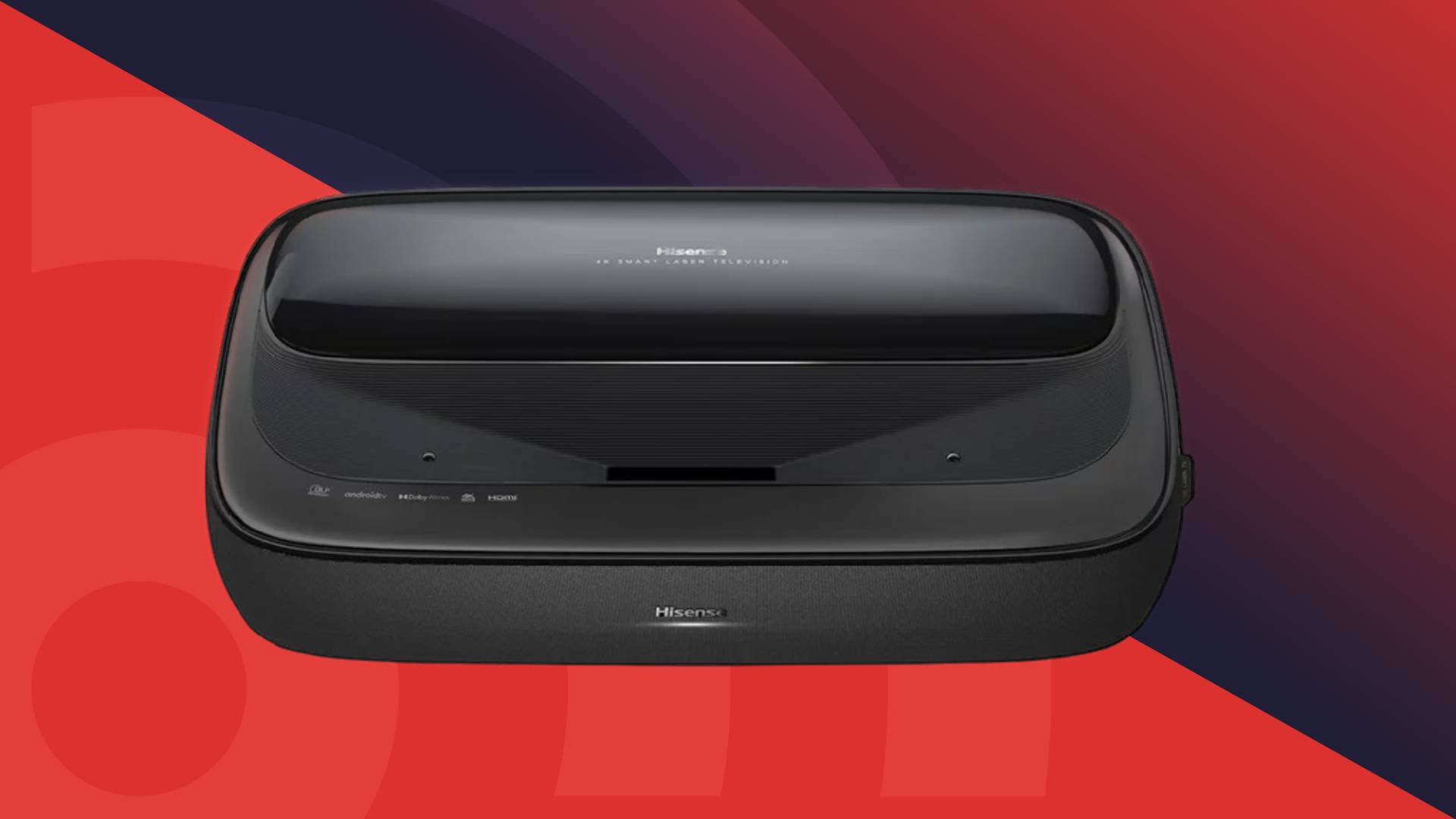
The best 4K projectors are still the ultimate way for you to get an immersive theater experience at home. All of the projectors in this guide are capable of beaming a larger image than any regular TVs, with 100 inches being a standard image size when a 4K projector is paired with a projection screen.
Over the years, we've reviewed many of the best 4K projectors, from some of the highest-specified models on the market through to the more affordable and high-value ones. Not every viewer has the same needs when buying a 4K projector, so we’ve made our recommendations here based on a range of requirements, from no-compromise home cinema to sports viewing and portable use – and in all cases, tested by us.
An advantage to the best 4K projectors we've selected below is that, unlike one of the best 85-inch TVs, they don't take up much room. If you're set on a portable option or a projector you'll only use now and again, also take a look at our best outdoor projectors guide . And if you're specifically interested in ultra short throw projectors, a category that provides more convenience when it comes to positioning, plus the benefit of built-in speakers and streaming capability, also check out our guide to the best ultra short throw projectors.

Al is TechRadar's Senior Editor for Home Entertainment and is based in the US. He has 20-plus years experience reviewing projectors and TVs and was previously the editor of Sound & Vision magazine.
The Quick List
Want to cut to the chase and find out which 4K projectors are the best? Below, you’ll find a roundup of our choices. You can also jump to a more detailed review of every pick and our price comparison tool to help you find the best deals.
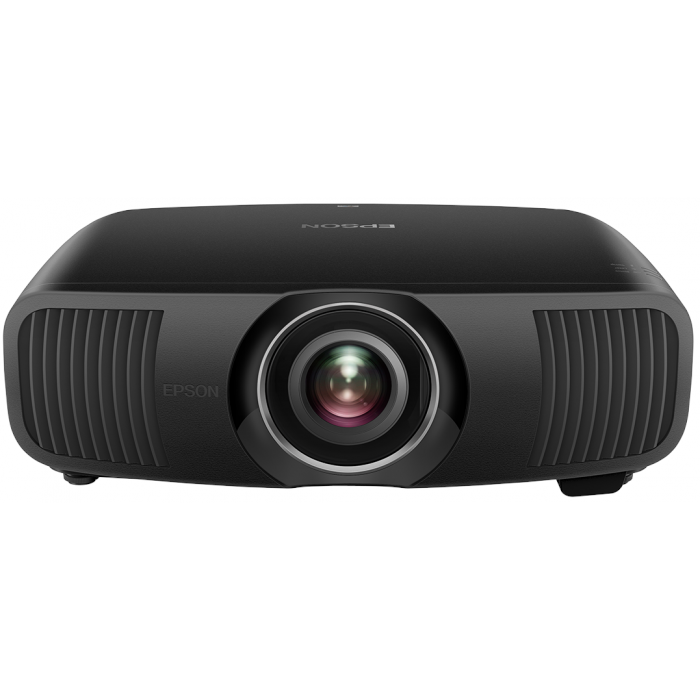
The best 4K projector for most people
This laser-based 3LCD model is a great all-around option for movie and TV watching, and it’s also reasonably priced for a projector offering good brightness and excellent contrast.
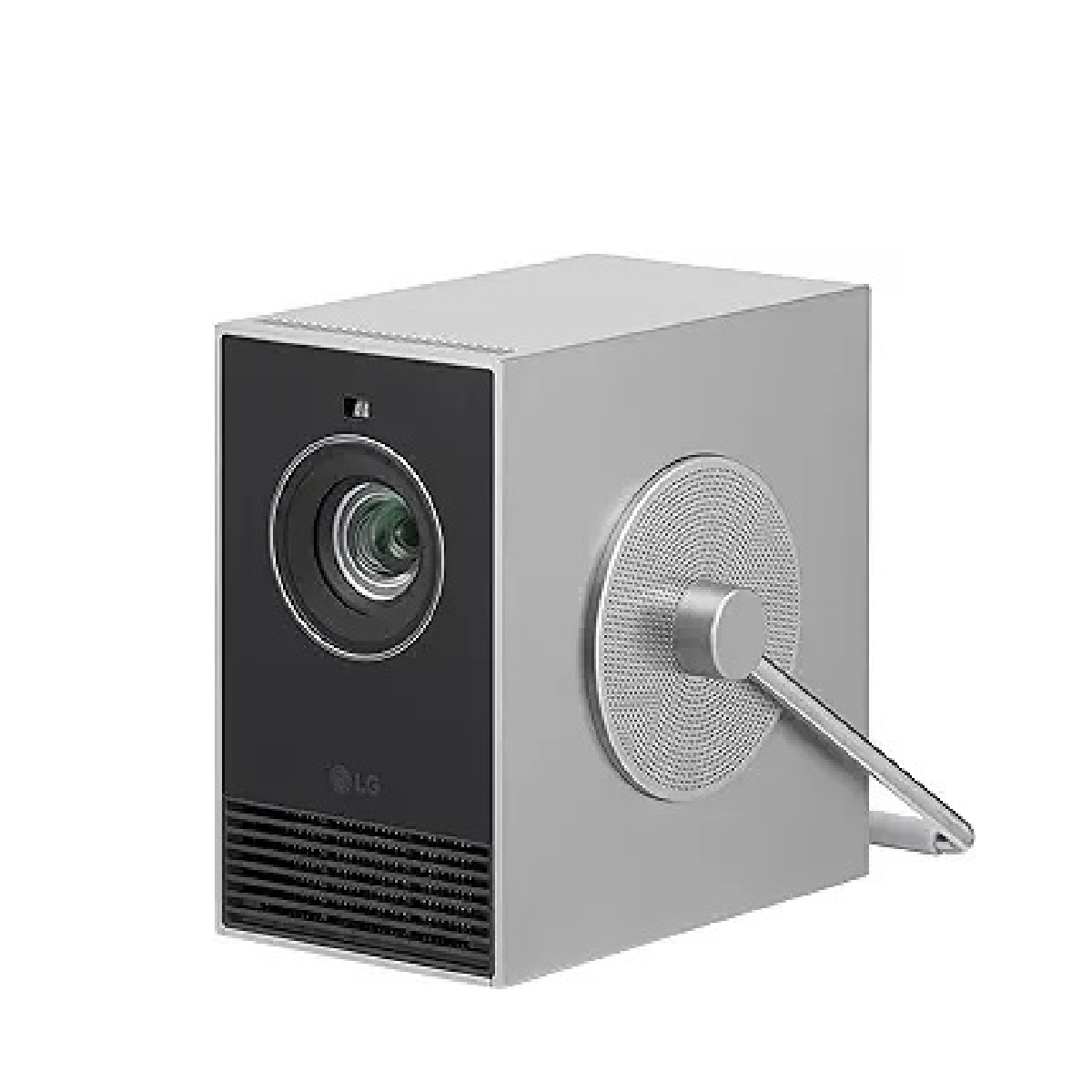
The best affordable and portable 4K projector
This ultra-compact projector uses an RGB laser DLP light engine to beam pictures with great detail and rich, accurate color, and it's priced lower than other 4K models.
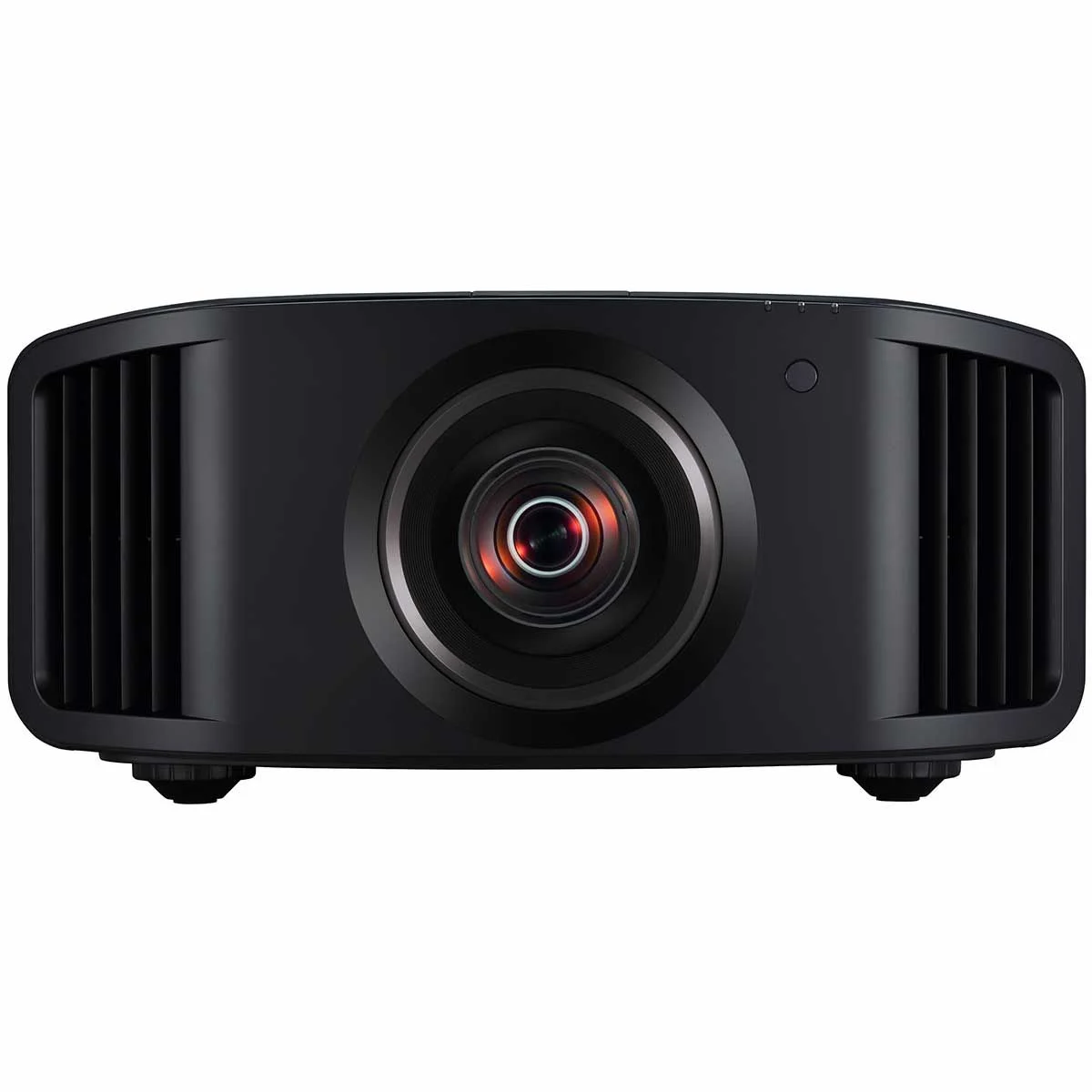
The best premium 4K projector
The only native 4K projector on our list, the DLA-NZ800 is a top choice for home theater perfectionists. JVC’s projector dynamically processes HDR on a frame-by-frame basis, resulting in a true cinema-quality picture.
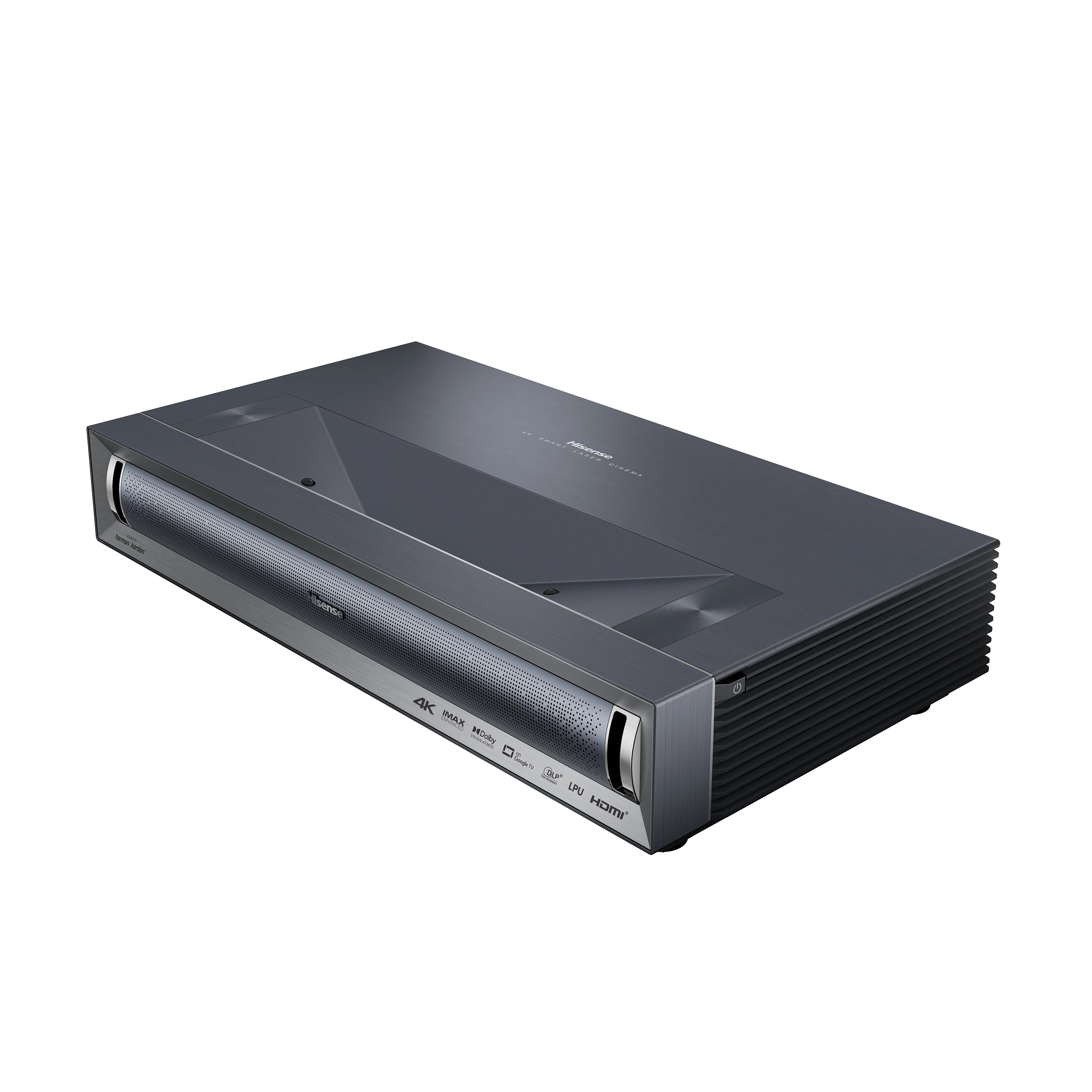
The best ultra short throw 4K projector
An ultra short throw projector designed to project big images onto a wall or screen from inches away, the Hisense PX3-Pro combines high brightness with rich color and can stream from apps directly via its Google TV interface.
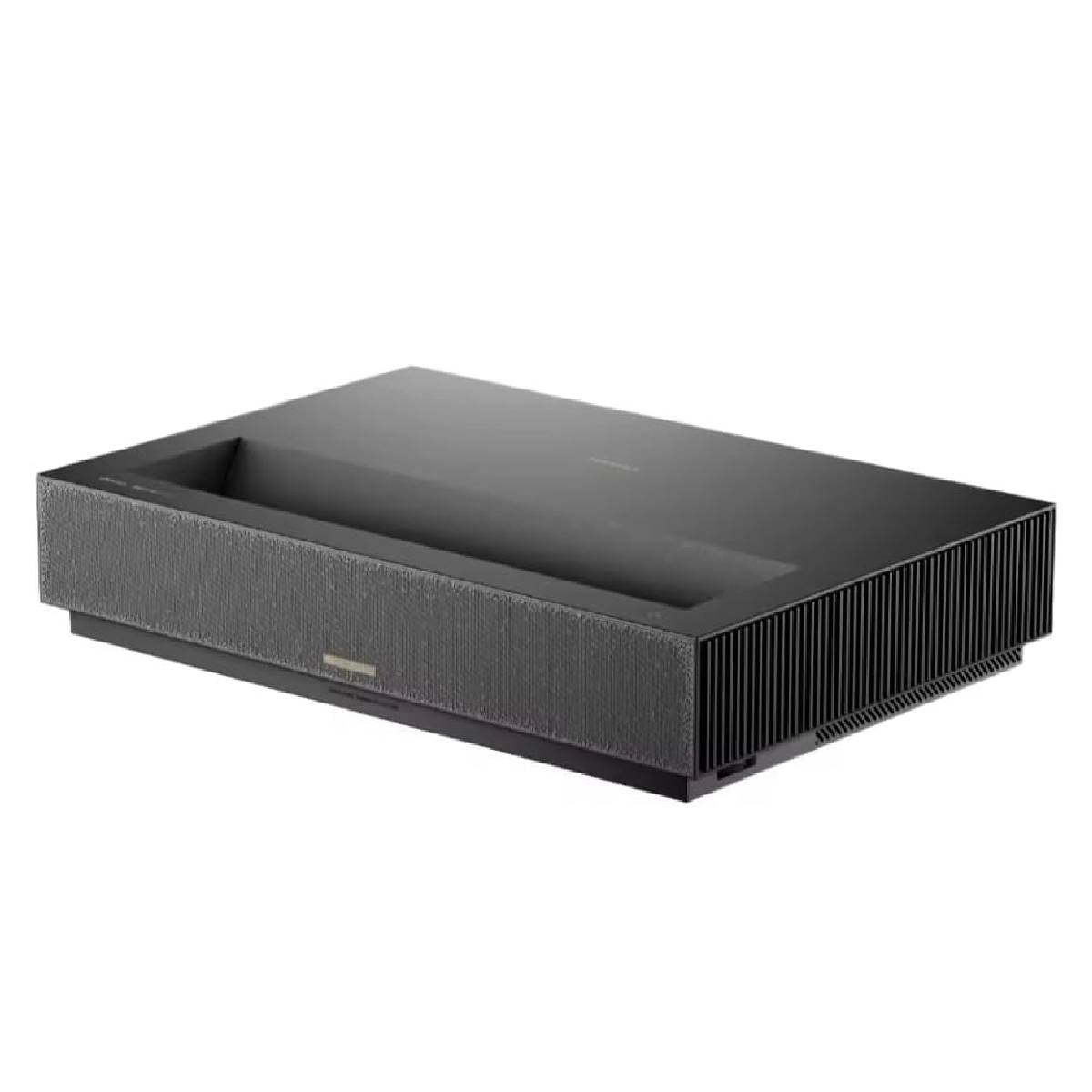
The best budget ultra short throw 4K projector
A cheap, reasonably bright ultra short throw option that does away with some of the video-enhancing features found on other projectors, but offers good overall picture and sound for the price.
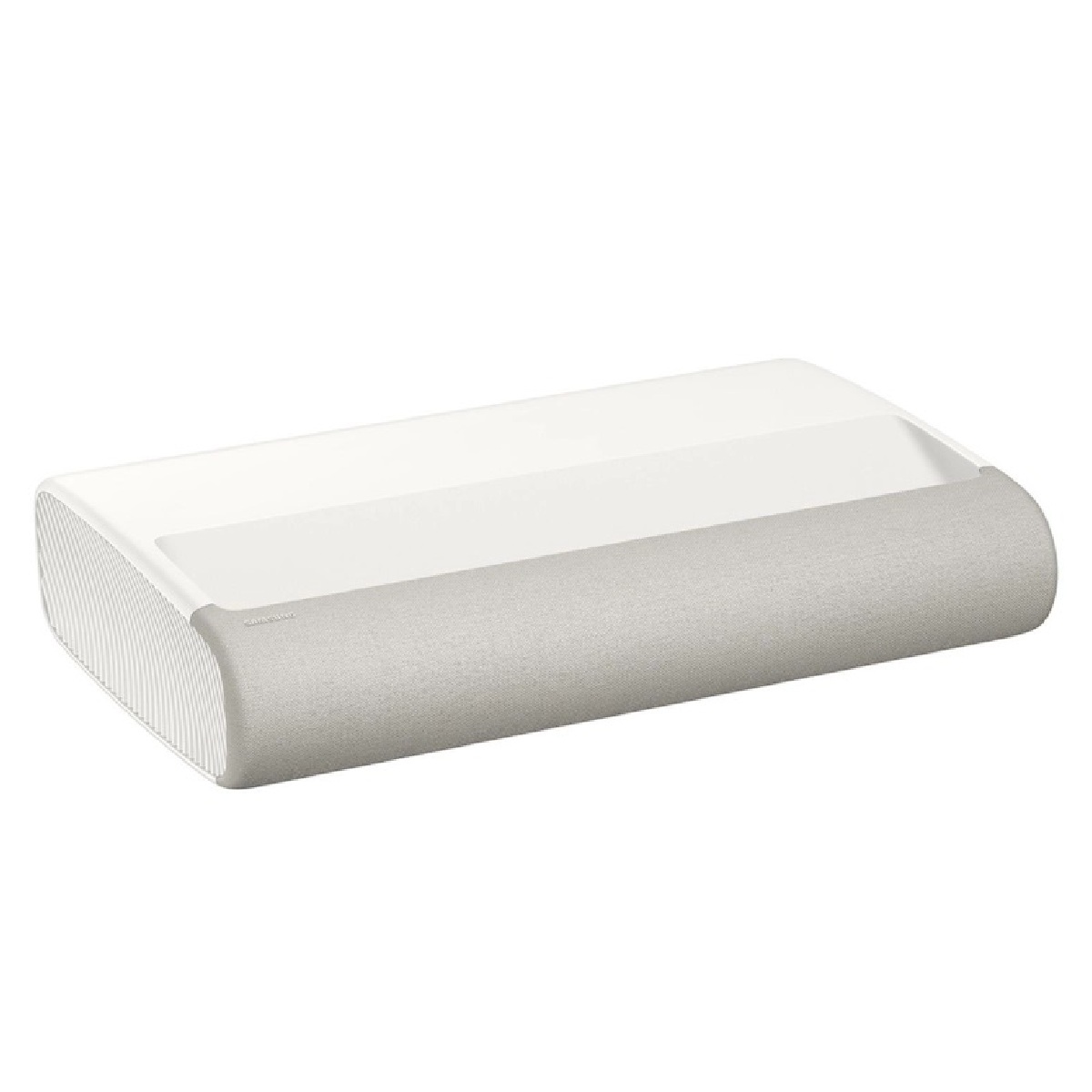
The best 4K projector for built-in sound
Samsung’s ultra short throw model is capable of projecting images up to 130 inches and streams using the same smart interface found on the company’s TVs. Powerful built-in speakers make it a great all-in-one home theater option.
Load the next product...
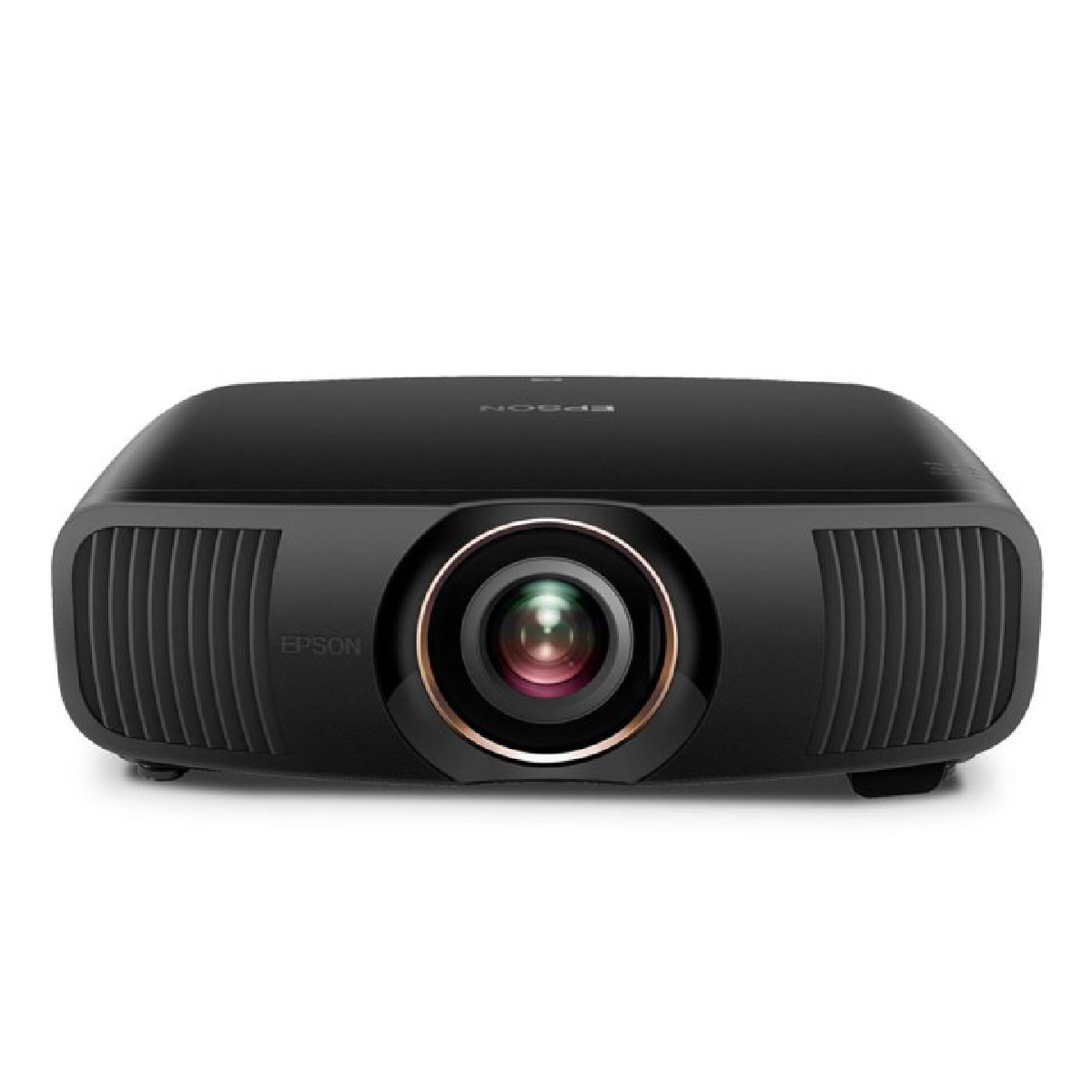
The best 4K projector for sports fans
With its 3,300 lumens brightness spec, this Epson long-throw projector is a perfect option for viewing sports in brighter rooms, and it also has excellent motion handling and 4K 120Hz support for gaming.
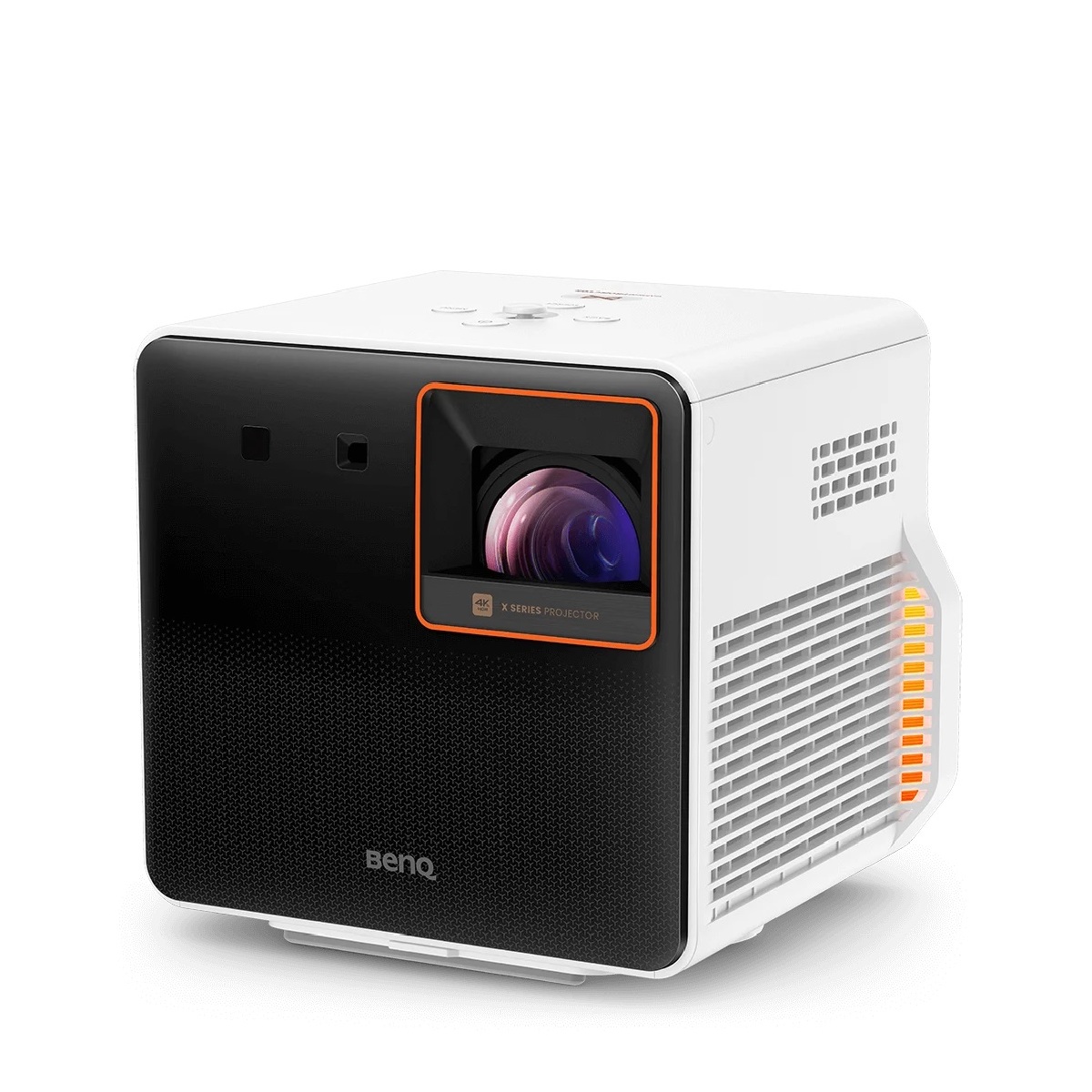
The best 4K projector for gaming
A relatively affordable DLP model, BenQ’s projector has a 1080p
240Hz display mode for ultra-smooth gaming and also looks great when showing movies. A built-in 2.1-channel sound system completes the package.
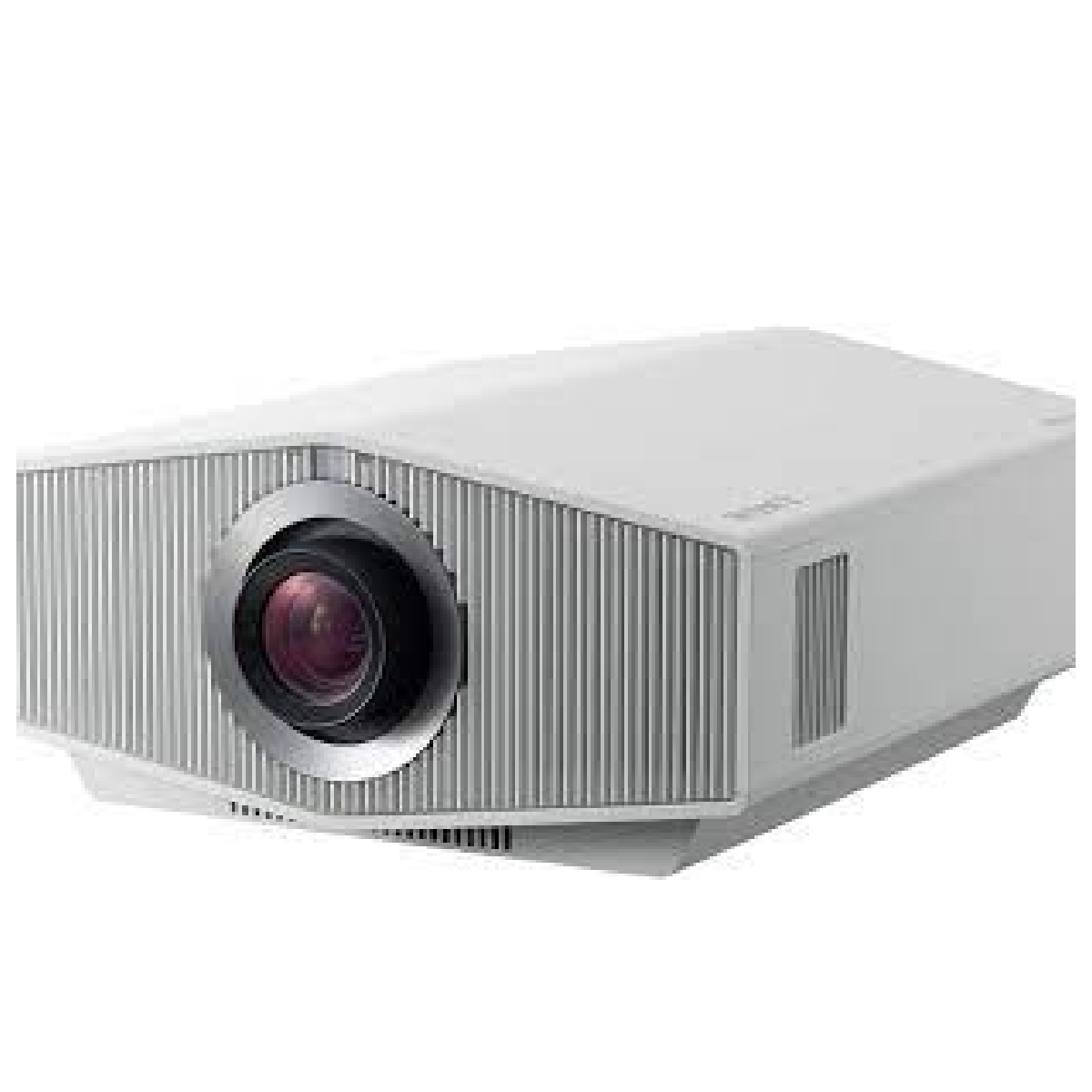
The best premium 4K projector for gaming
The Bravia Projector 8 may be pricey, but its peerless motion handling, 4K 120Hz support, and ultra-low input lag make it fantastic for gaming.
The best 4K projectors in 2025
Why you can trust TechRadar
Below you'll find full write-ups for each of the best 4K projectors in our list. We've tested each one extensively, so you can be sure that our recommendations can be trusted.
The best 4K projector overall
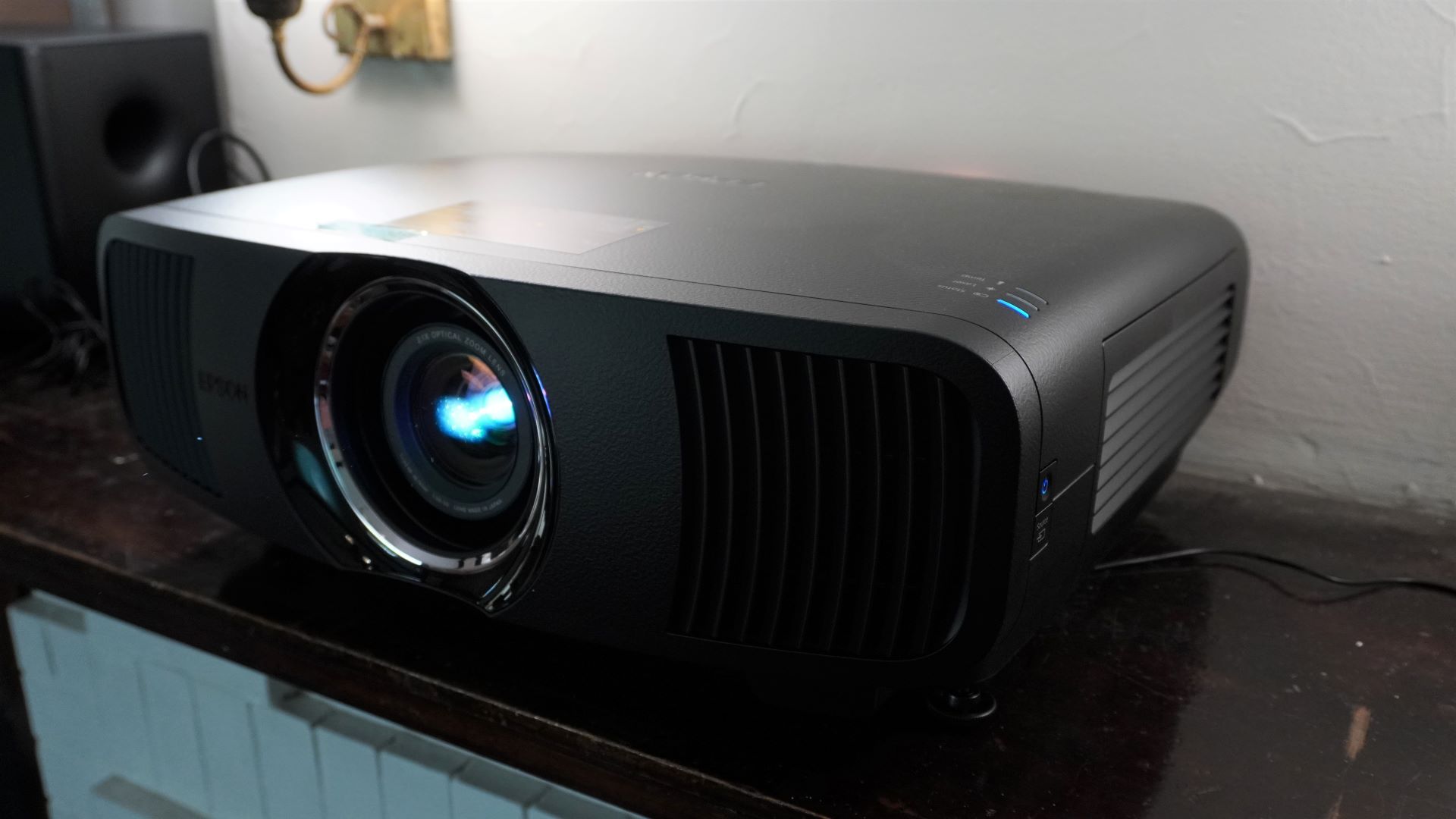
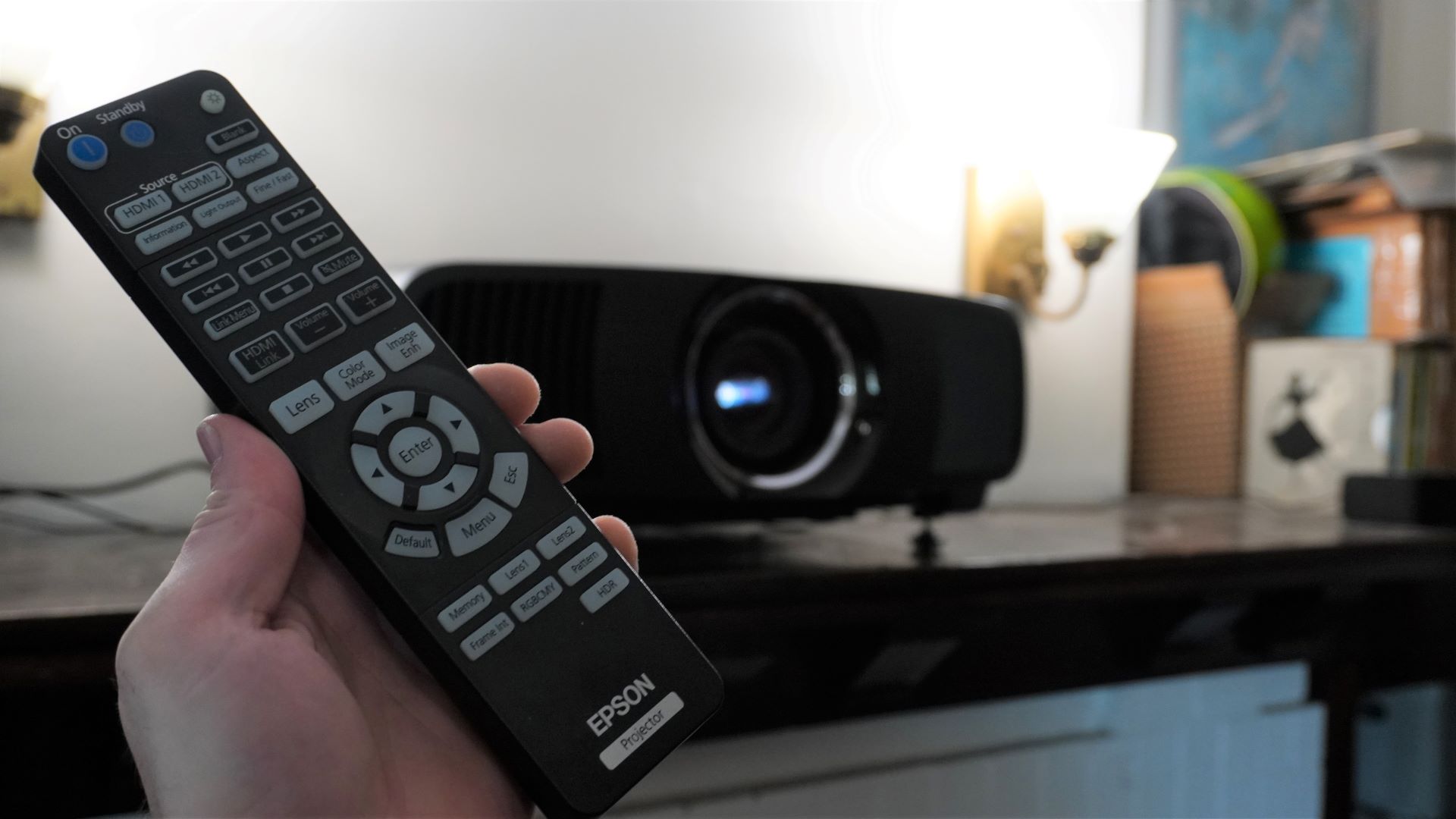
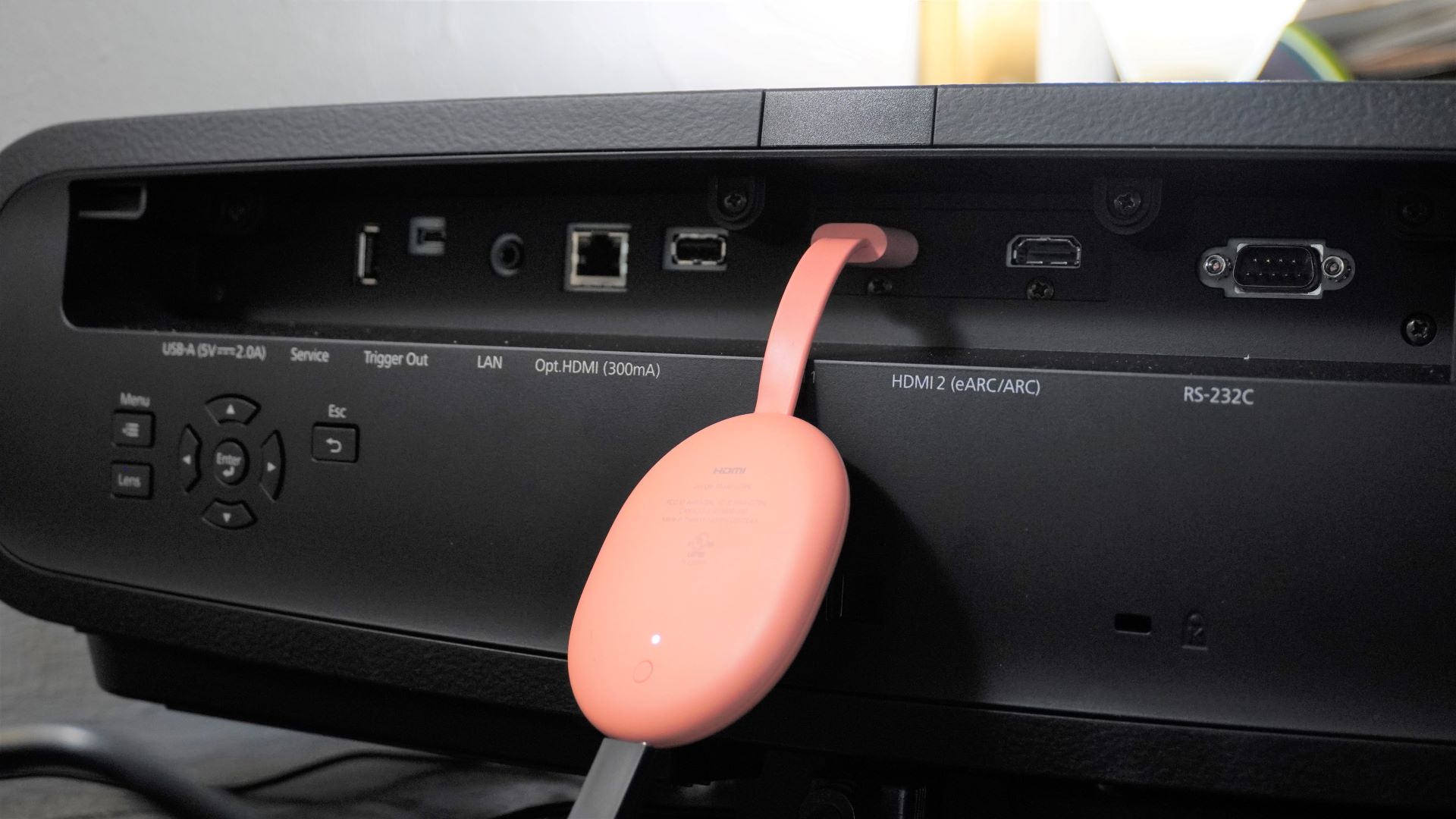

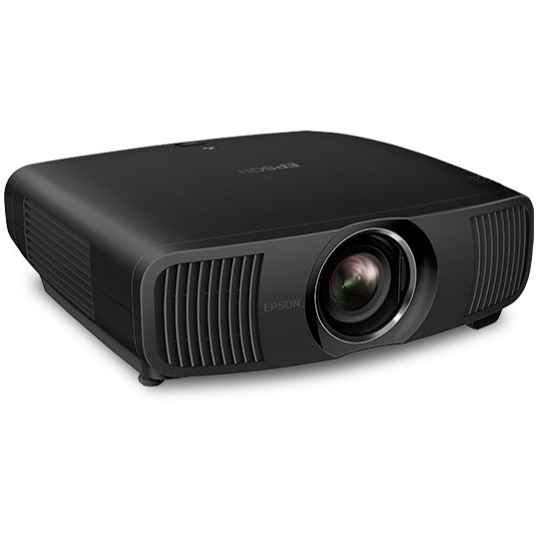
Specifications
✅ You want the best long-throw projector for the price:
The Epson LS12000 delivers sufficiently bright 4K pictures in a traditional home theater setup at a much lower price than premium options like the JVC DLA NZ-800.
✅ You want a long-throw projector for gaming: The LS12000 is one of the few long-throw projectors with HDMI 2.1 ports to support 4K 120Hz input, making it a great choice for both gaming and movies.
❌ You want a portable projector: The LS12000 is a large projector designed for permanent installation on a high shelf or ceiling at the back of a dedicated home theater room. If you want a projector that can be moved from room to room, other options are available.
❌ You don’t want to dim the lights: Projectors like the LS1200 perform best when paired with a projection screen in a light-controlled, ideally dark room. Watching in brighter conditions will wash out picture contrast.
If you want one of the best long-throw 4K projectors and don’t want to spend the high sums required for one of the top models from Sony and JVC, the Epson Pro Cinema LS12000 comes highly recommended. With a laser light engine and 2,700 lumens brightness, it’s capable of putting out a bright HDR (both HDR10 and HDR10+ formats are supported) picture that will impress in a dim home cinema setting.
The LS12000 has serious build quality and can project pictures up to 130 inches. It features vertical and horizontal lens shift for easy, accurate setup with a projection screen and has a pair of HDMI 2.1 ports that support 4K 120Hz input.
Although the LS12000 thrives in a dark room, in our review we found its picture too be “still stunningly acceptable even without ideal conditions.” It’s not exactly a cheap option, but Epson also has a cheaper but nearly identical model, the Epson S11000, which has a lower contrast ratio and less well-defined blacks.
Read the full Epson Pro Cinema LS12000 review
The best affordable and portable 4K projector
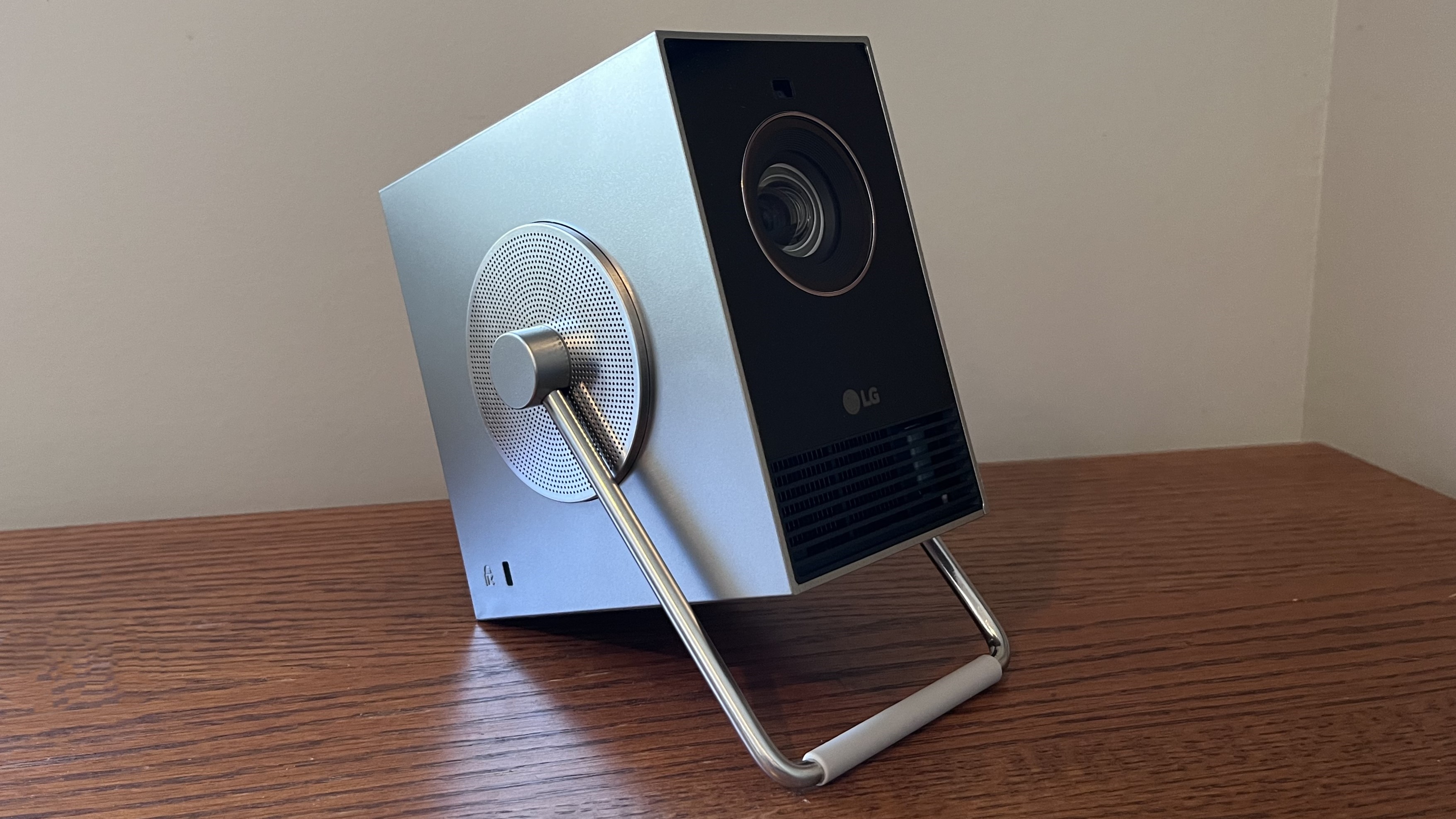
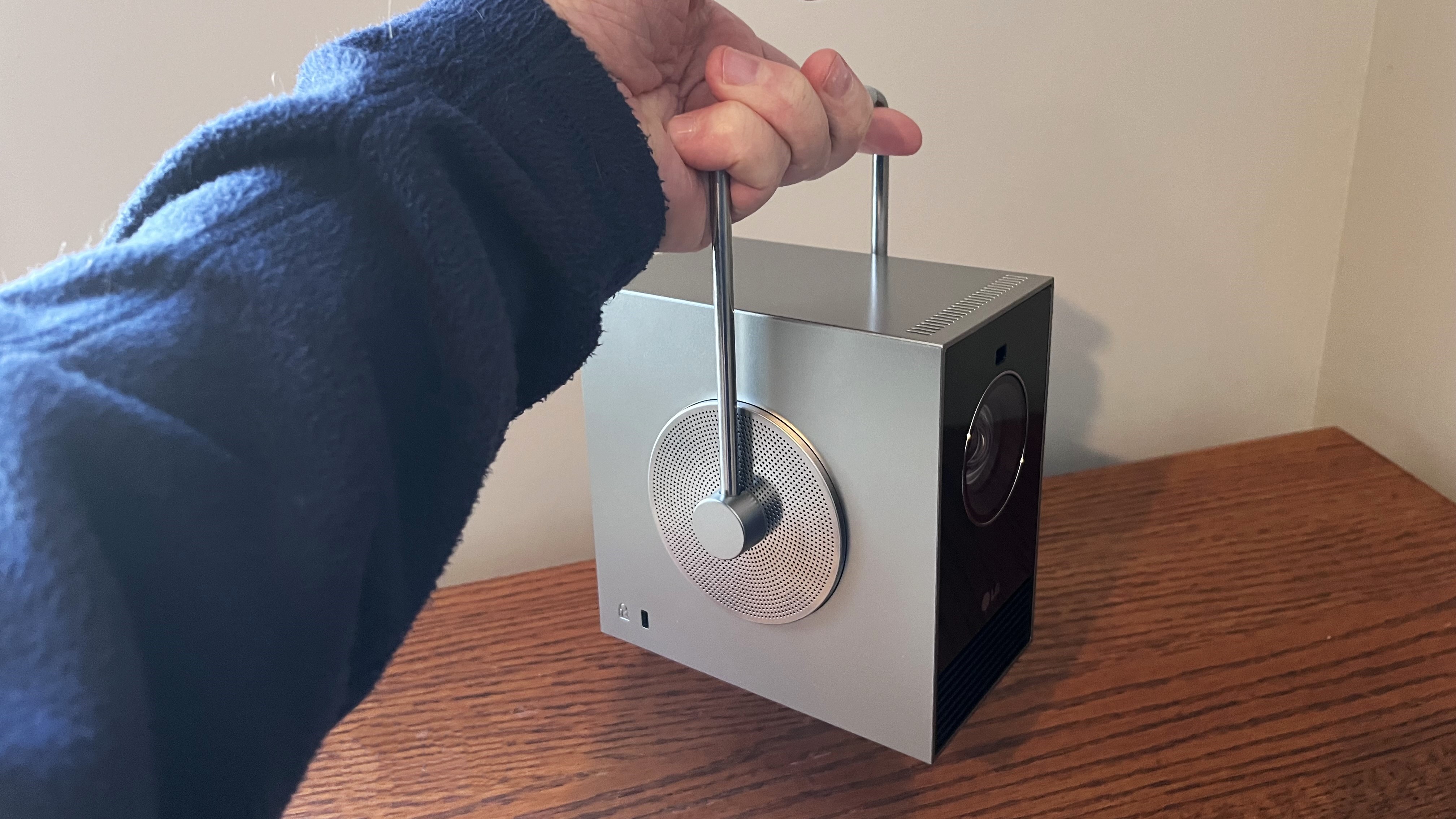
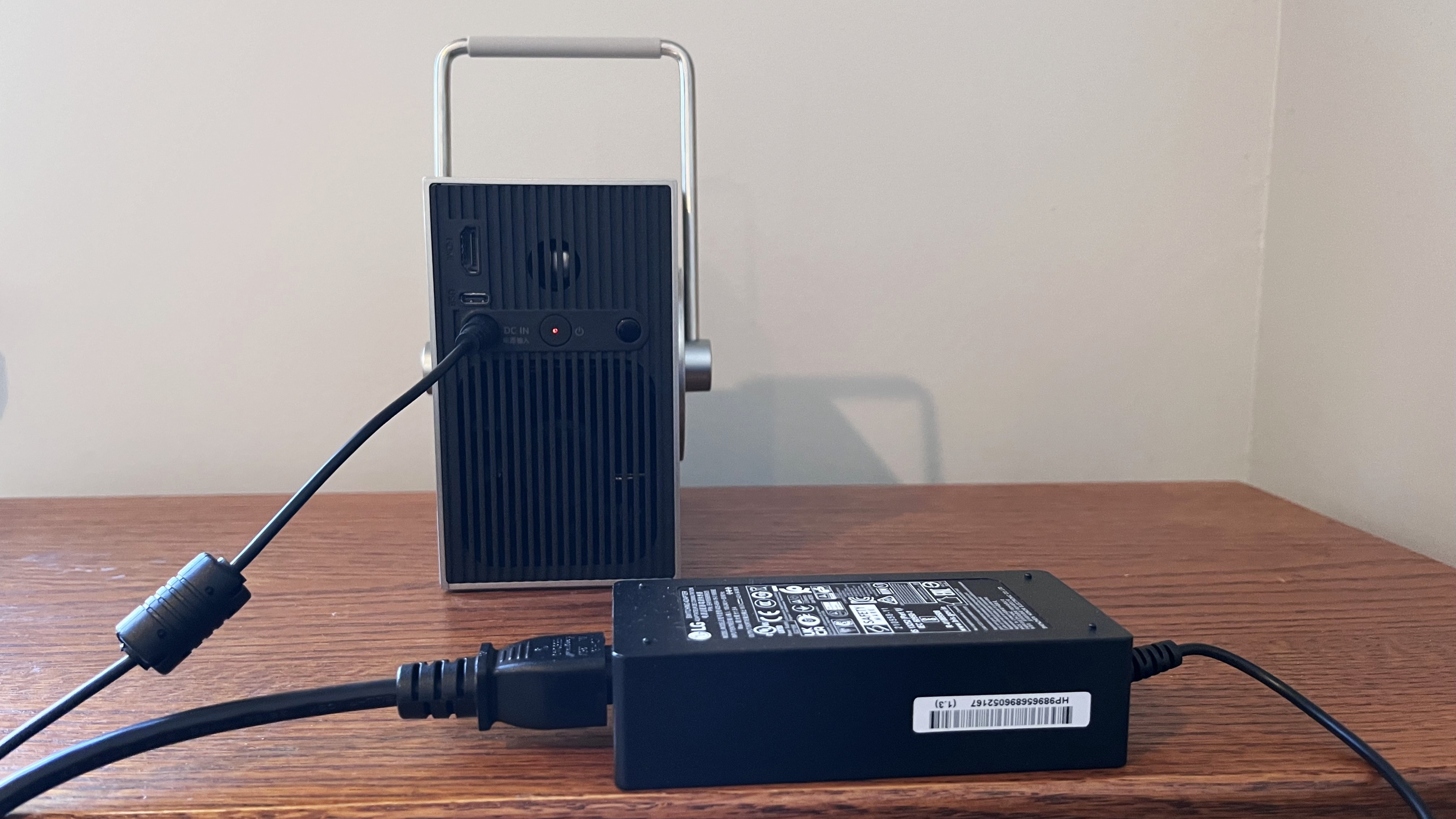
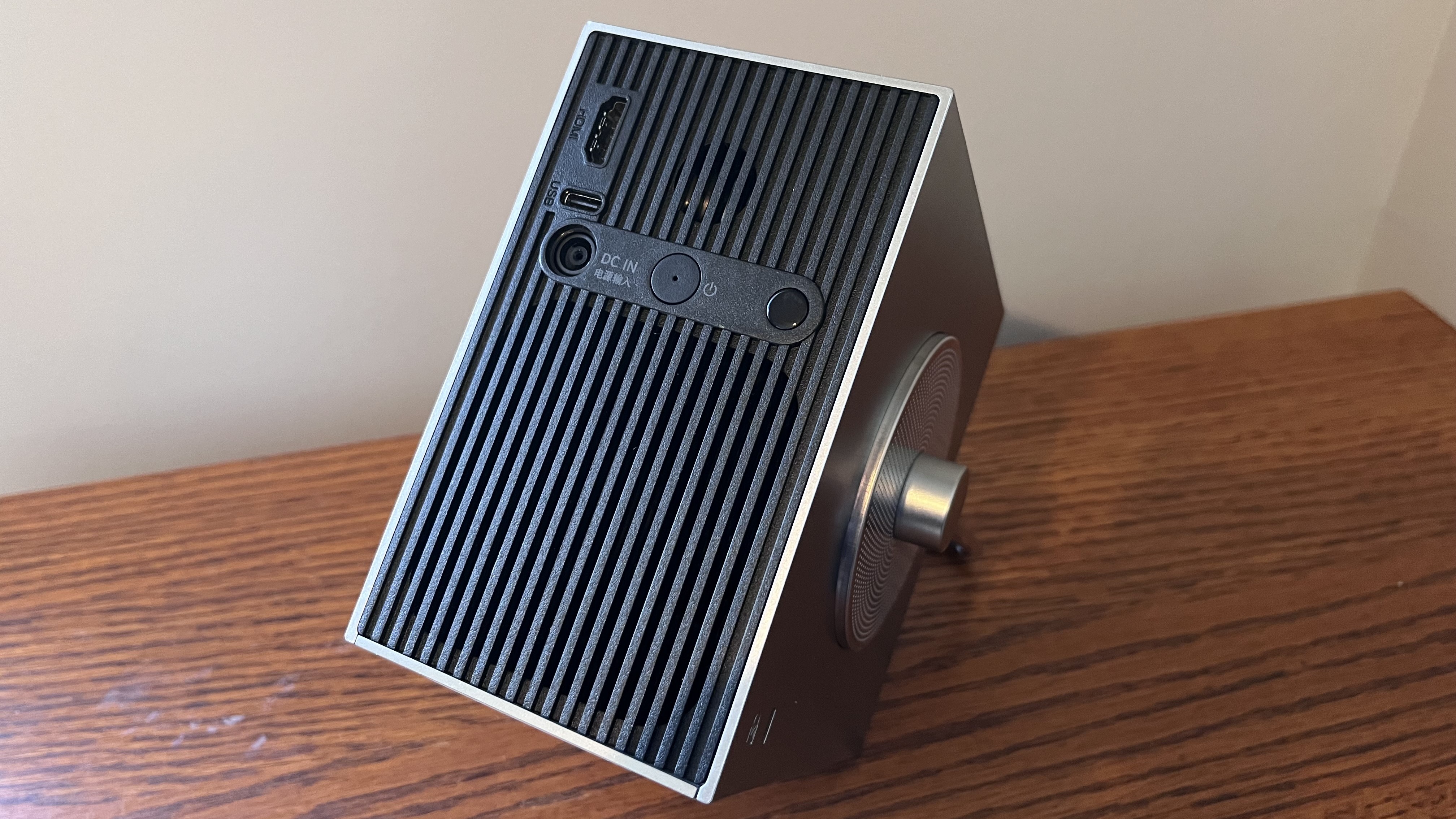
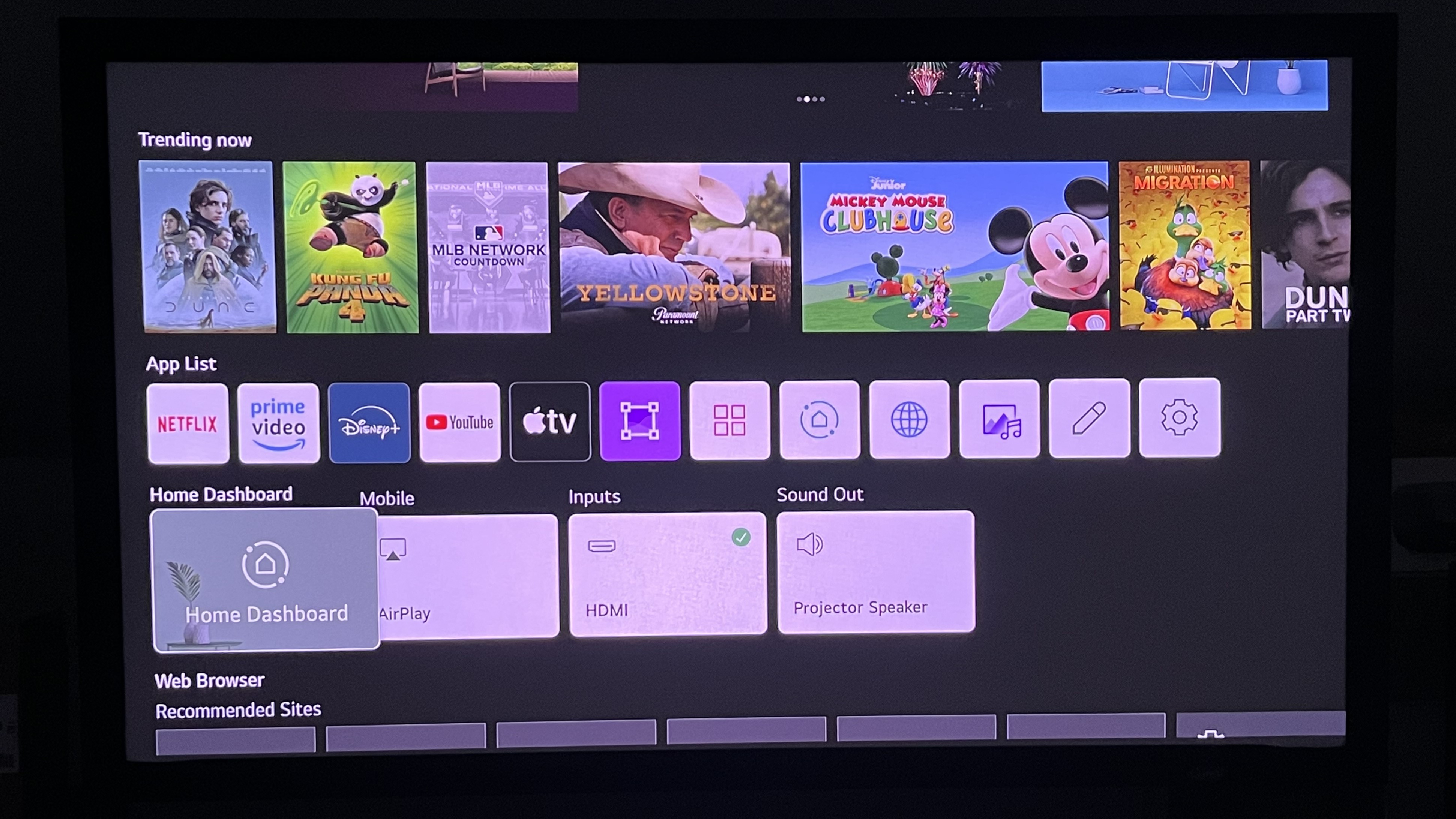
Specifications
✅ You want a portable 4K projector: Most projectors this compact and portable are HD-resolution models that don’t deliver the full-range of picture detail in 4K sources. The CineBeam Q not only displays 4K but has HDR10 high dynamic range support.
✅ You want a great streaming platform: While most portable projectors use the mediocre Android TV platform for streaming, the CineBeamQ uses the same excellent webOS platform found in LG’s TVs.
❌ You want a bright projector: With only 500 ANSI lumens, brightness of the CineBeam Q is limited and you’ll need to dim the lights or shut them off to get the best picture.
❌ You want a rechargeable projector: The CineBeam Q needs to be plugged into power, which limits its portability to a degree. Other portable projectors such as the Samsung Freestyle provide a rechargeable battery option.
LG’s CineBeam Q is an ultra-compact 4K projector that emphasizes style. With an all-metal case and a carrying handle that rotates 360 degrees, the CineBeam Q is as much an art object as a projector, and you’ll likely want to keep it out and visible even when it’s not being used.
Despite its glamorous exterior, the LG CineBeam Q is serious about picture quality, with a Filmmaker Mode preset that delivers a highly accurate image out of the box. Its combination of an RGB laser DLP light engine, 4K resolution, and HDR10 high dynamic range support makes LG’s projector a great option for movies, though the limited 500 ANSI lumens brightness means you’ll need to watch in a darkened room for best visual impact.
An auto screen adjustment feature with autofocus allows for easy setup when moving the projector from place to place, and there are plenty of manual setup and adjustment options for tweaking pictures. Streaming is handled by LG’s webOS platform – the same as found on the company’s TVs – which provides popular apps including Netflix, Disney Plus, Apple TV Plus, YouTube, and more.
Although portable, the LG CineBeam Q lacks a built-in rechargeable battery, and there’s no external battery accessory – a design choice that makes the CineBeam Q of limited use for outdoor viewing. Audio is also an afterthought, with the LG’s built-in speaker providing weak, tinny sound. Fortunately, the CineBeam’s Bluetooth pairing with Dual Audio Output feature lets you connect up to two Bluetooth devices like a speaker, headphones, or soundbar simultaneously, which is the recommended audio option here.
Read the full LG CineBeam Q projector review
The best premium 4K projector
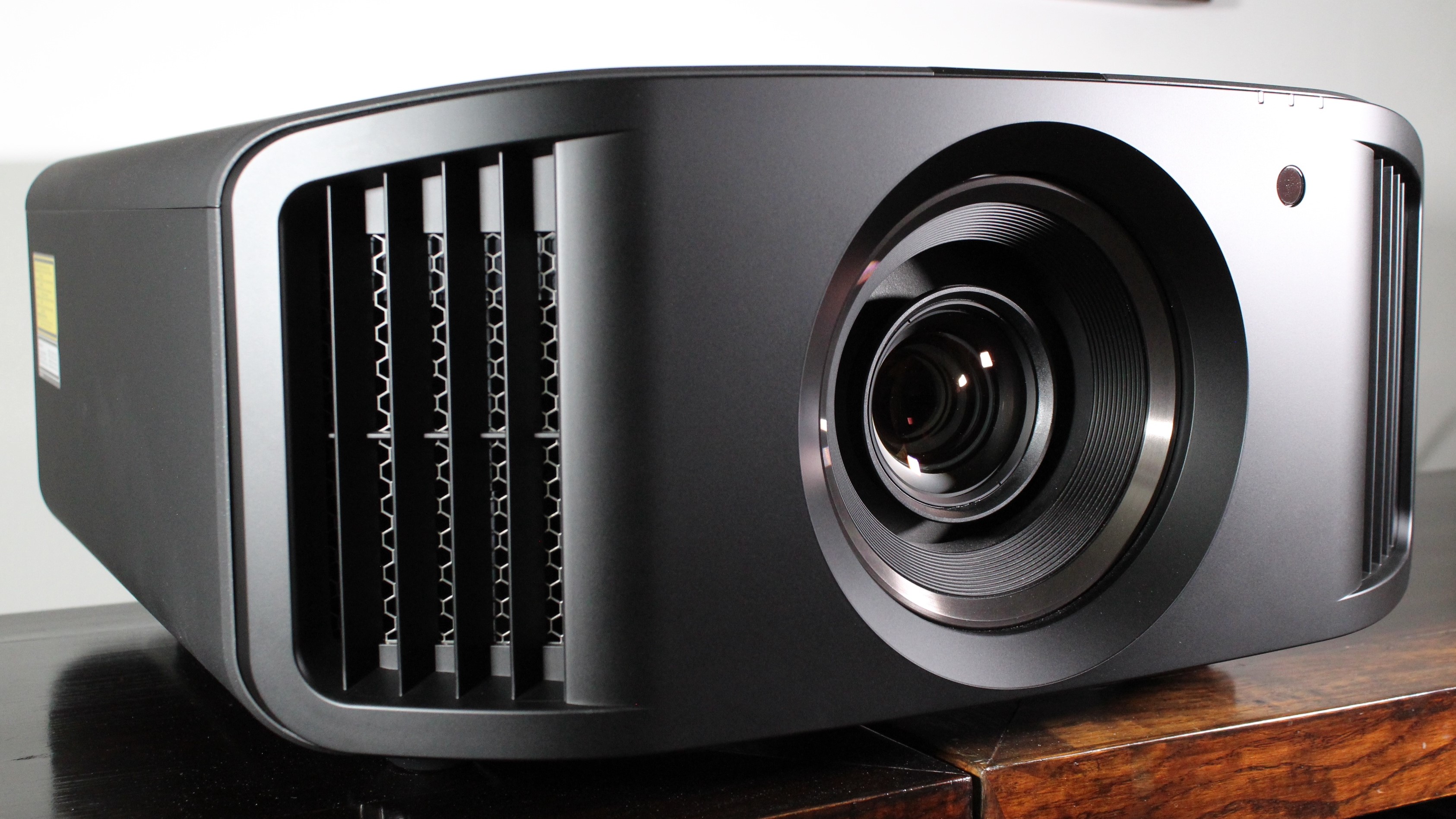
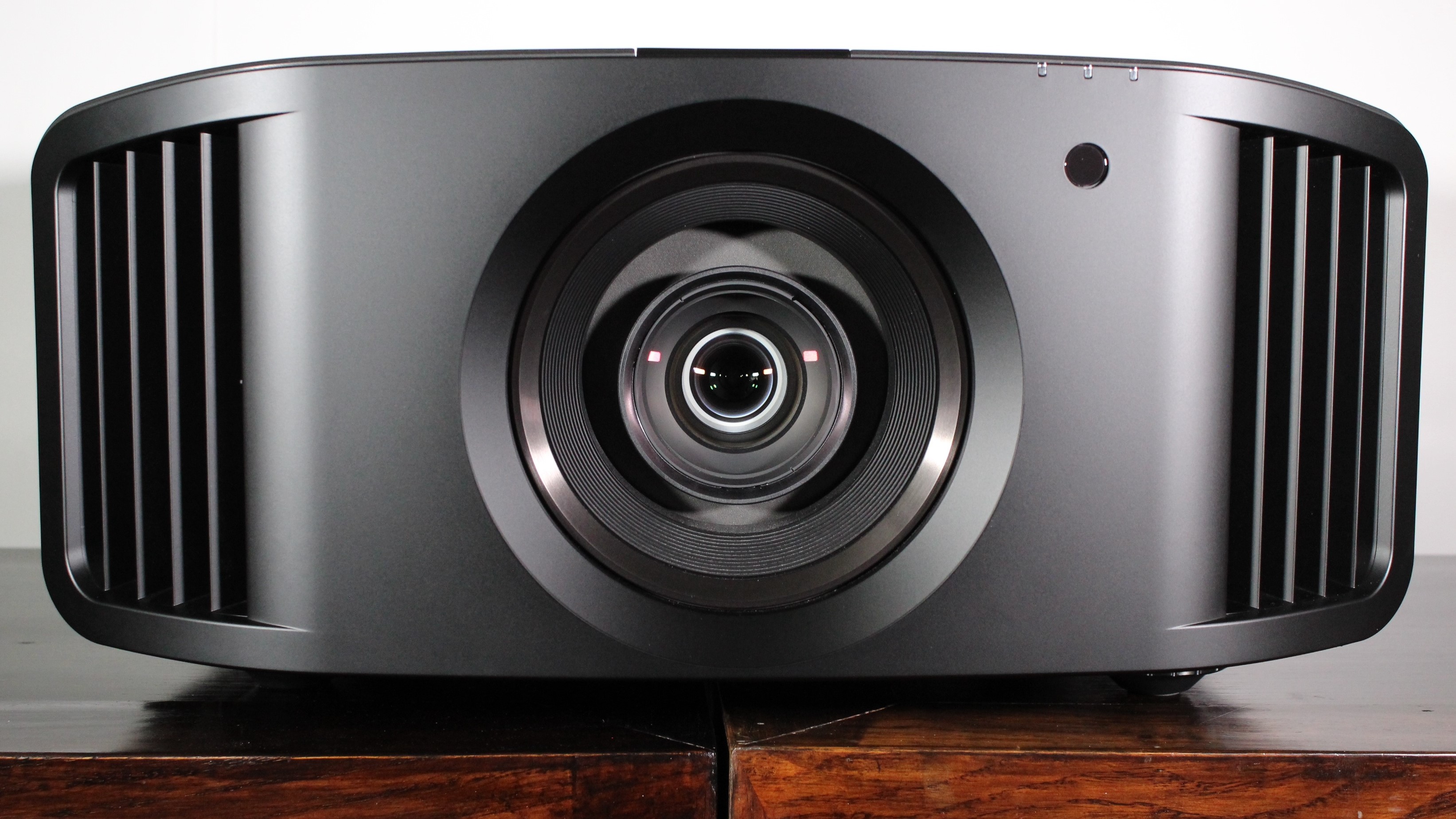
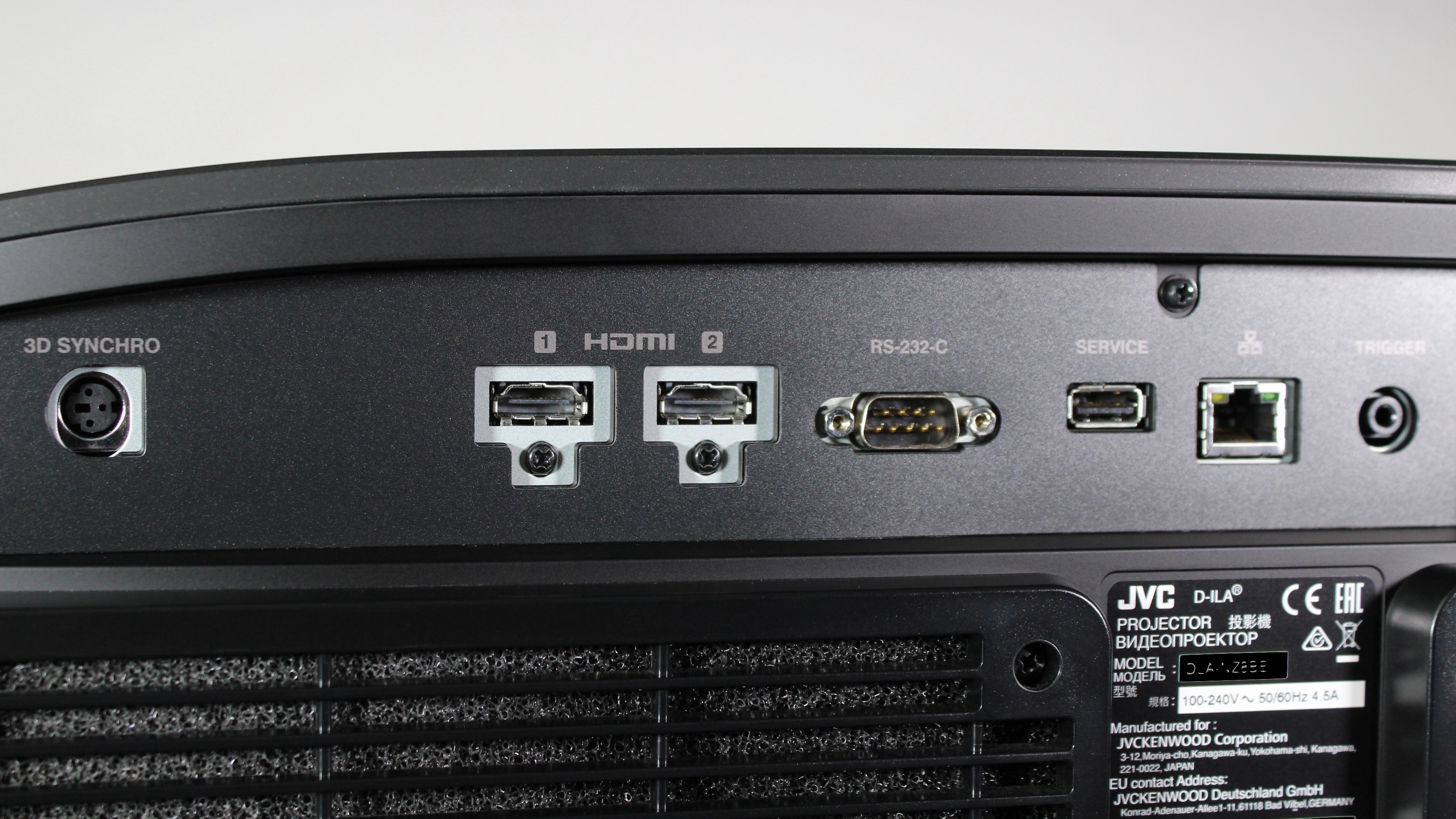
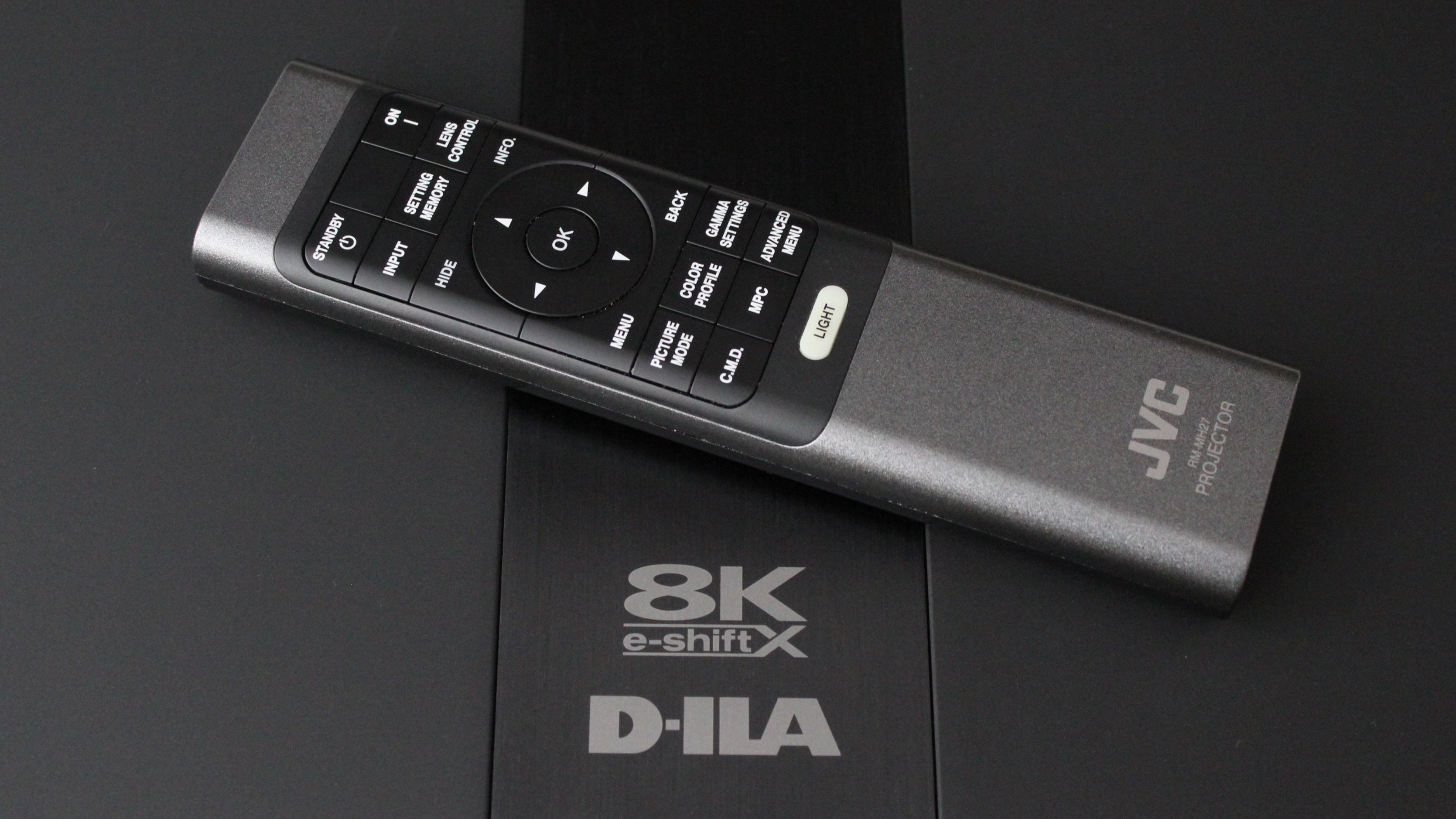
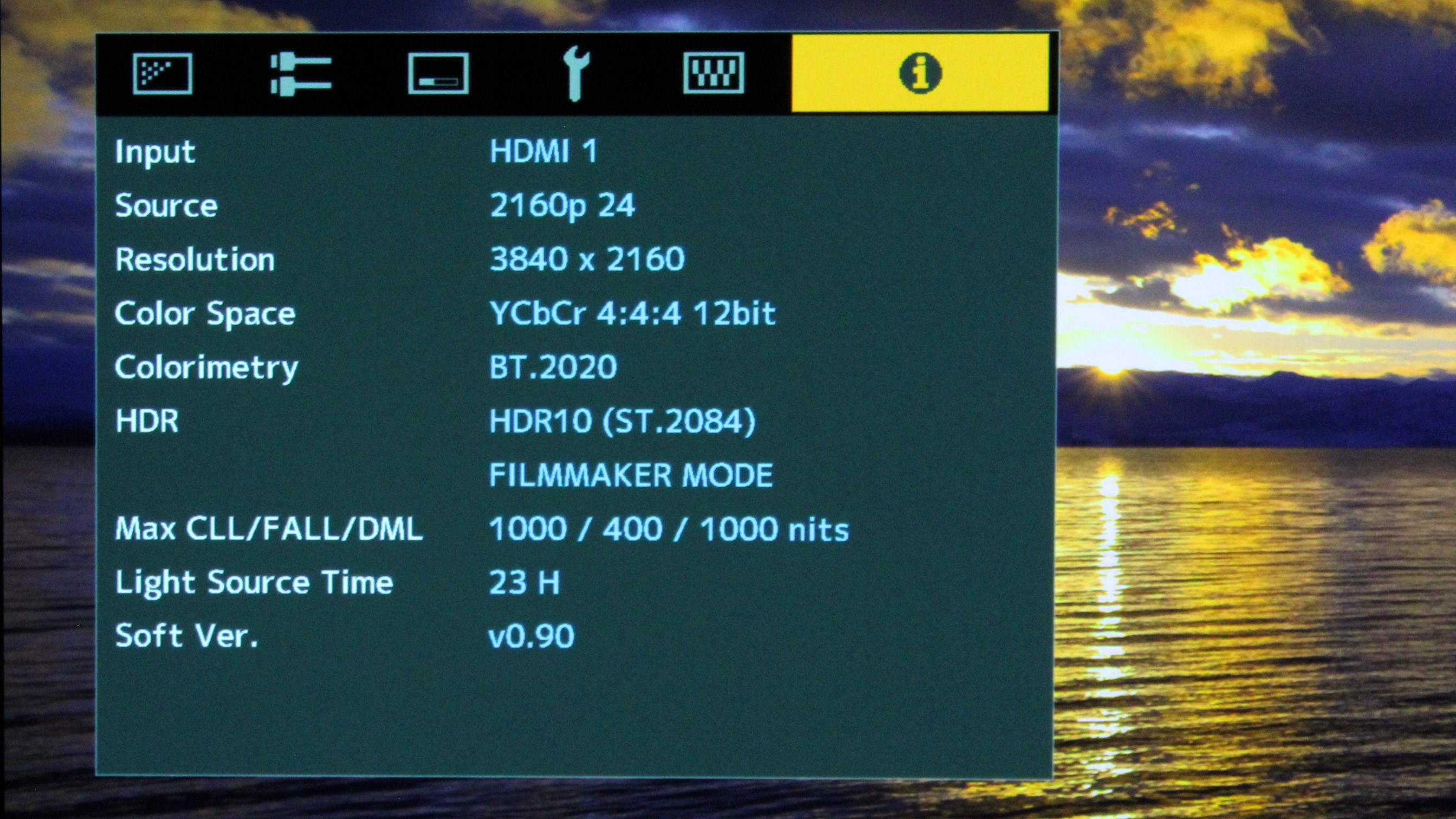
Specifications
✅ You want the best projector for movies: The NZ800’s high contrast ratio and sophisticated high dynamic range processing, including HDR10+ support, makes it a no-compromise option for high-end home theater installations.
✅ You want 8K support: The NZ800 is one of the few projectors that supports input and display of 8K signals, making it an entirely future-proof home theater projector option.
❌ You want to save money: Although the JVC’s high price tag can be justified, the Epson LS12000 will be a more reasonable option if you’re trying to put together a home theater on a limited budget,
❌ You don’t need 8K: The NZ800’s 8K display and upscaling support is a great feature, but it adds to the projector’s already considerable expense and most people will be content watching in 4K resolution.
JVC’s DLA-NZ8 long reigned as the best premium model in this guide, but the company’s new DLA-NZ800 takes everything great about the NZ8 and kicks it up a notch.
Like its predecessor, the NZ800 is a native 4K projector that uses a three-chip D-ILA imaging device and a BLU-Escent laser light source. But the new model features a re-designed D-ILA chipset that delivers even deeper blacks, brighter highlights and improved picture uniformity.
The NZ800’s 8K/e-shiftX upscaling boost 4K pictures to 8K resolution, and it can accept native 8K signals. But what’s most impressive about this projector is its handling of high dynamic range formats (HDR10+, HDR10, and HLG supported). In our review, we called the JVC NZ800 “streets ahead of the competition” when it comes to HDR handling, which is carried out using powerful Auto Tone Mapping along with a Frame Adapt HDR feature that works dynamically in real-time. A 65mm all-glass lens ensures that images have flawless focus and geometry, and it even supports 3D (optional shutter glasses required).
Gaming is another standout use for the NZ800, which supports up to 120p frame rates via its HDMI 2.1 inputs and has a 36ms input lag – a low amount for a projector not specifically designed for gaming.
The DLA-NZ800 is doubtless a pricey, premium option and you can find other projectors that will satisfactorily light up the big screen for considerably less. But we can’t think of a better choice than the NZ800 for home theater perfection, and with its 8K support and laser light source, it’s a future-proof projector that will be in it for the long haul.
Read our full JVC DLA-NZ800 review
The best ultra short throw 4K projector
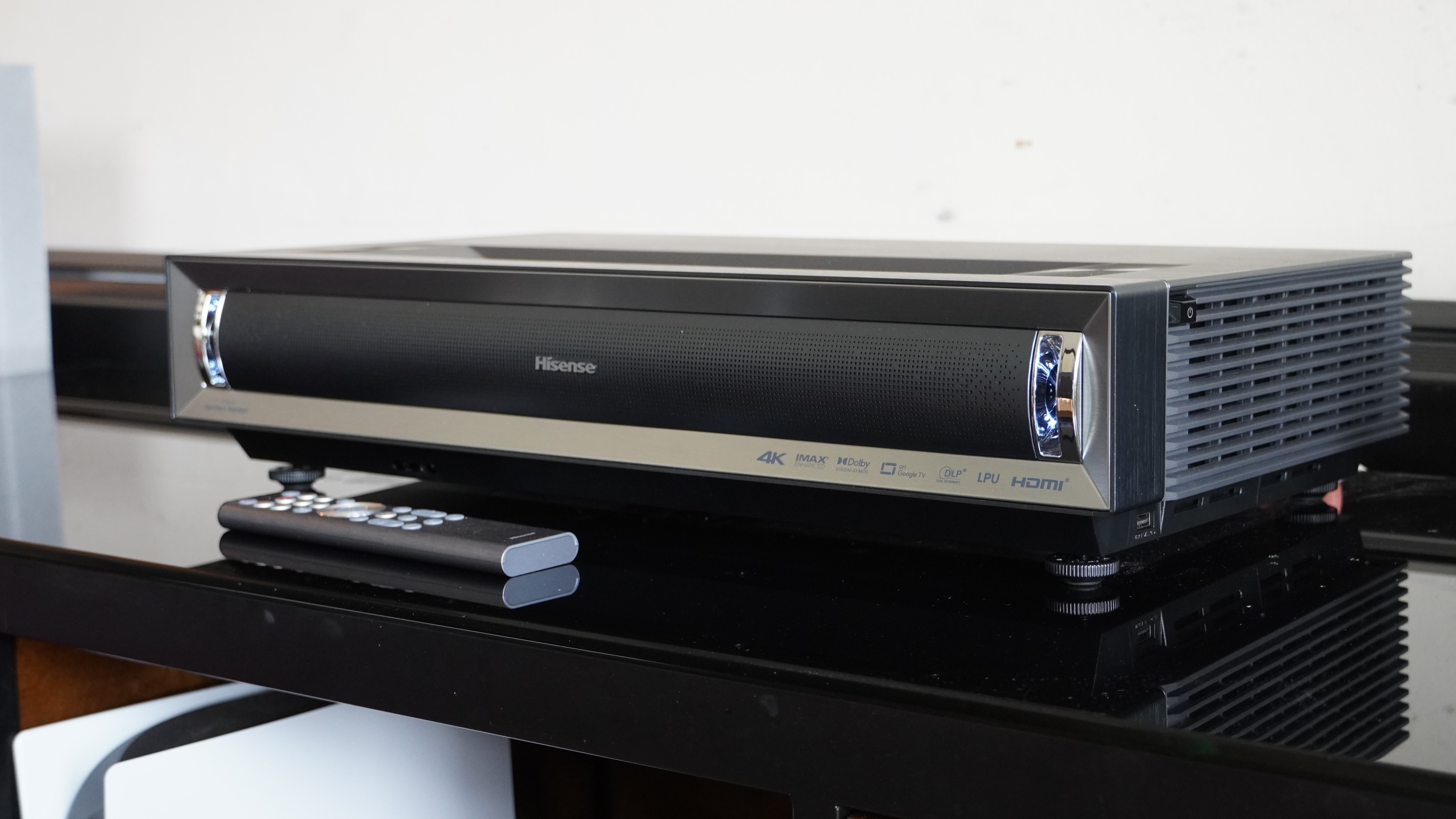
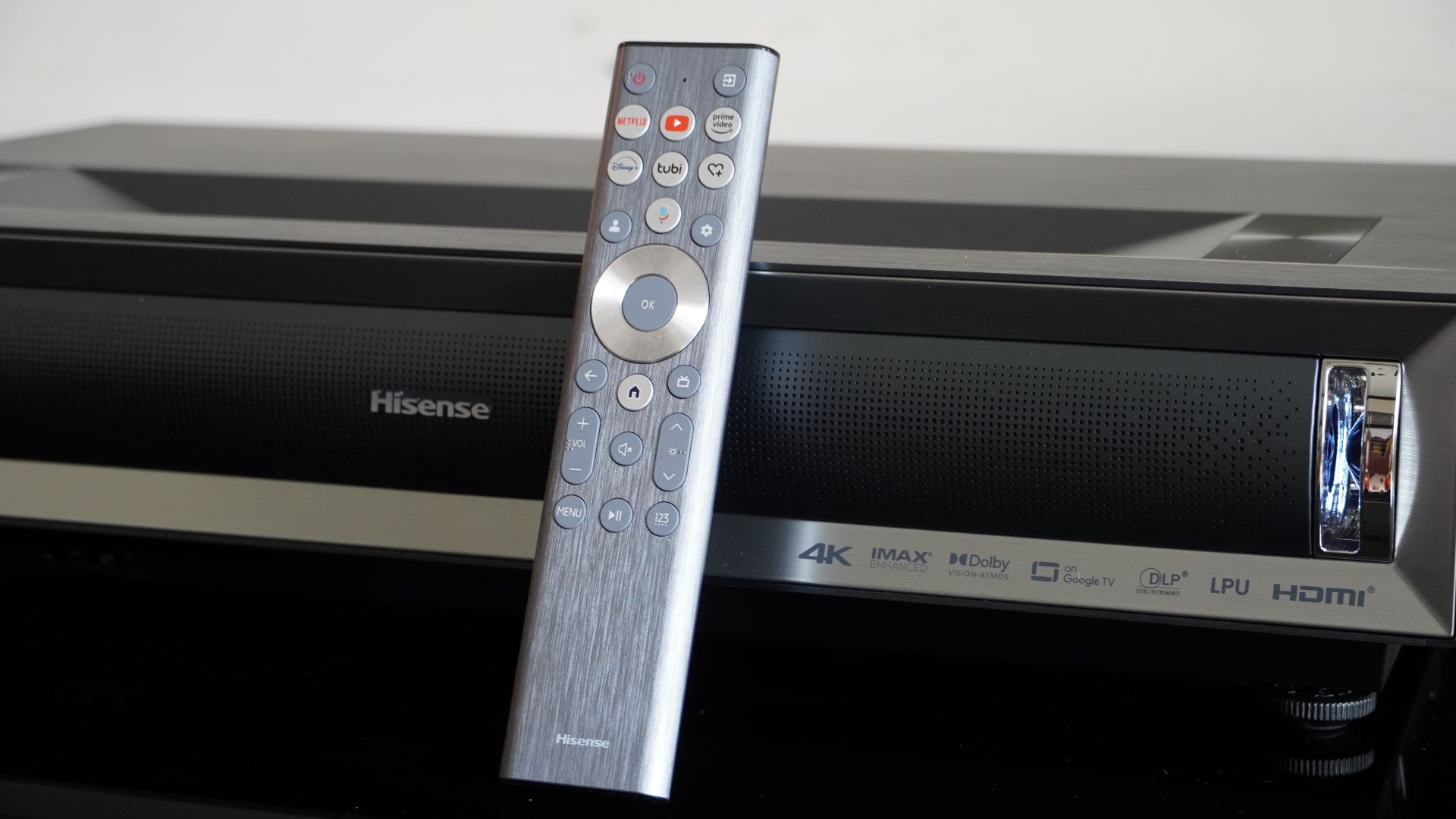
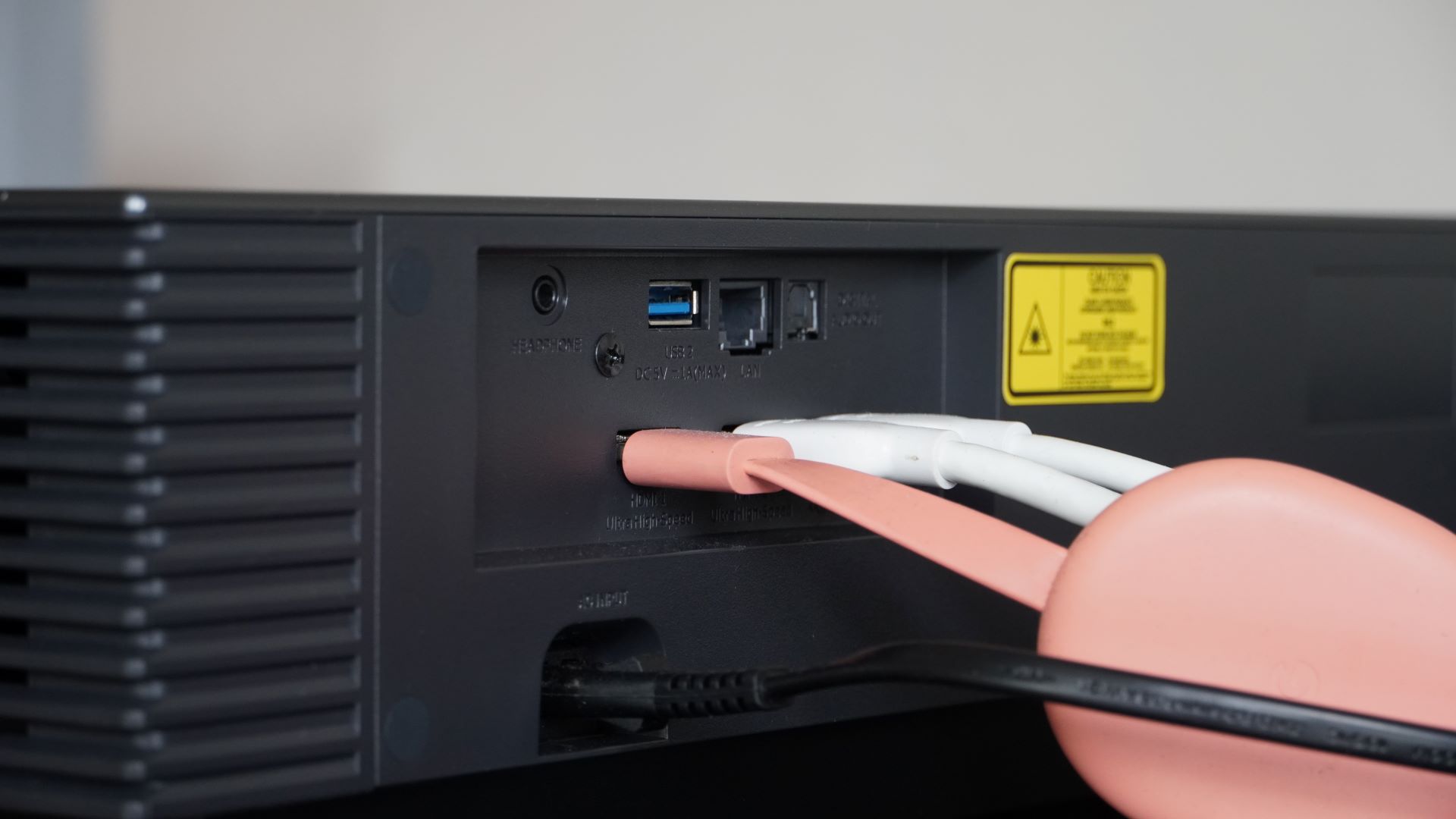
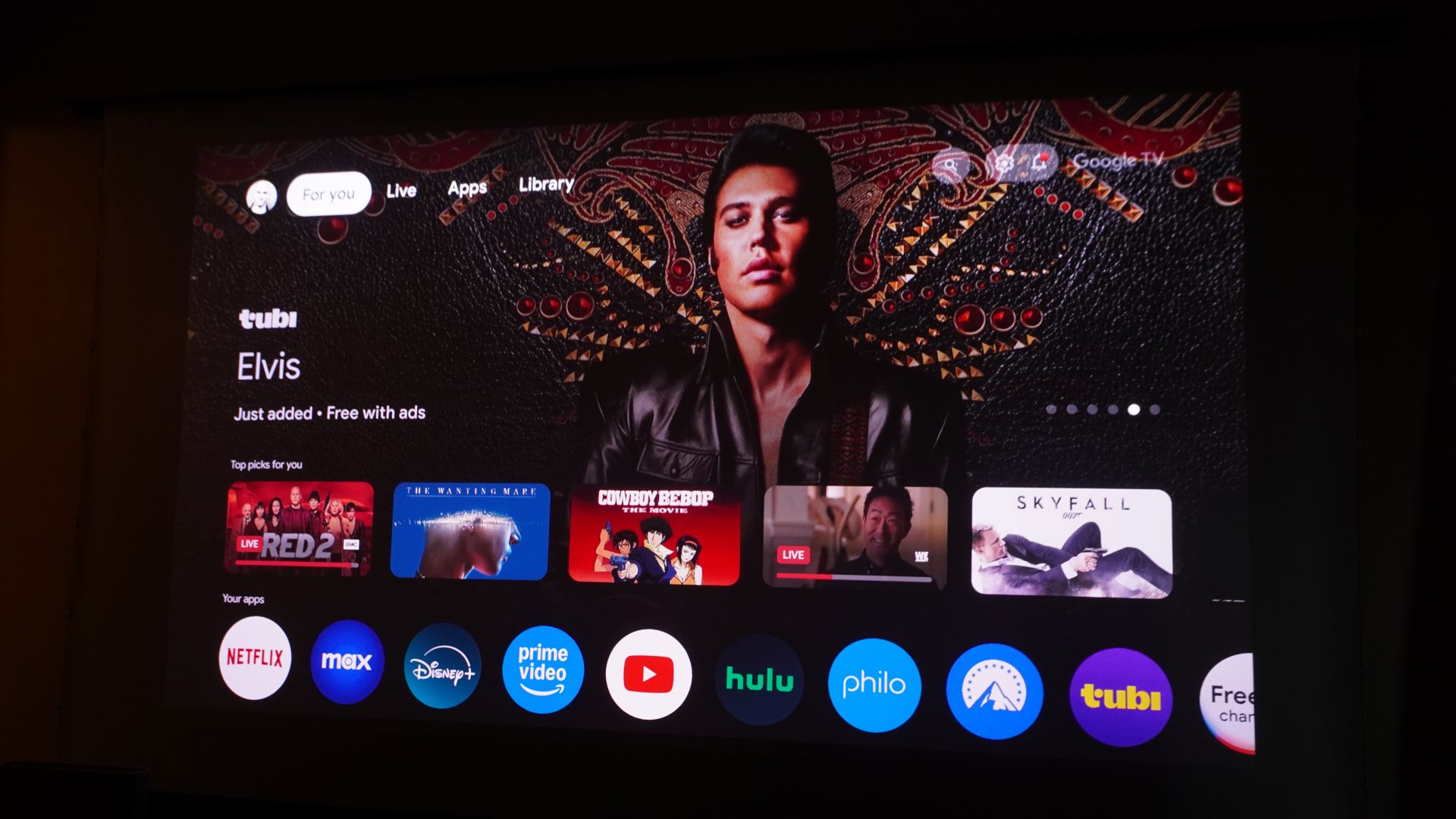

Specifications
✅ You want an ultra short throw projector: The Hisense PX3-Pro’s ultra short throw design allows it to be set up close to a wall where it can project images as large as 150 inches.
✅ You want a great projector for movies and gaming: The PX3-Pro has a bright picture with Dolby Vision and HDR10+ support. Its HDMI 2.1 ports can also can handle 4K 120Hz signals and it has a 1080p 240Hz mode for ultra-smooth gaming.
❌ You don’t want to see your projector: Ultra short throw projectors like the PX3-Pro are typically installed at the front of a room, close to the wall and just below the screen. If you don’t want that arrangement, a long-throw projector is a better option.
❌ You don’t need built-in streaming: Google TV is a key feature of the PX3-Pro, so if you’re more interested in a projector that doesn’t have smart TV features and works purely as a display, you should look at other options.
The Hisense PX3-Pro follows up on the company’s PX2-Pro by boosting the brightness level and adding features such as 4K 120Hz and 1080p 240Hz support for gaming. It also has a sleeker, retro-futuristic design and features the Google TV smart TV platform for streaming.
Picture quality is excellent on the PX3-Pro. With 3,000 lumens on tap, there’s enough brightness for viewing in well-lit rooms and when watching in the dark, you may need to lower the laser brightness level of the projector’s three-laser DLP light engine. ‘The PX3-Pro has comprehensive HDR support, with the Dolby Vision, HDR10+, and HLG formats covered, and it also has a built-in 50W Harman Kardon-designed speaker system that we said “can get loud enough to match the size of the pictures” in our review.
While the PX3-Pro is priced higher than its predecessor, which is still available, the design, features, and performance upgrades make it worth the extra expense. Whether you’re watching movies, gaming, or sports, the PX3-Pro will provide a great big-screen experience.
Read our full Hisense PX3-Pro review
The best budget ultra short throw 4K projector
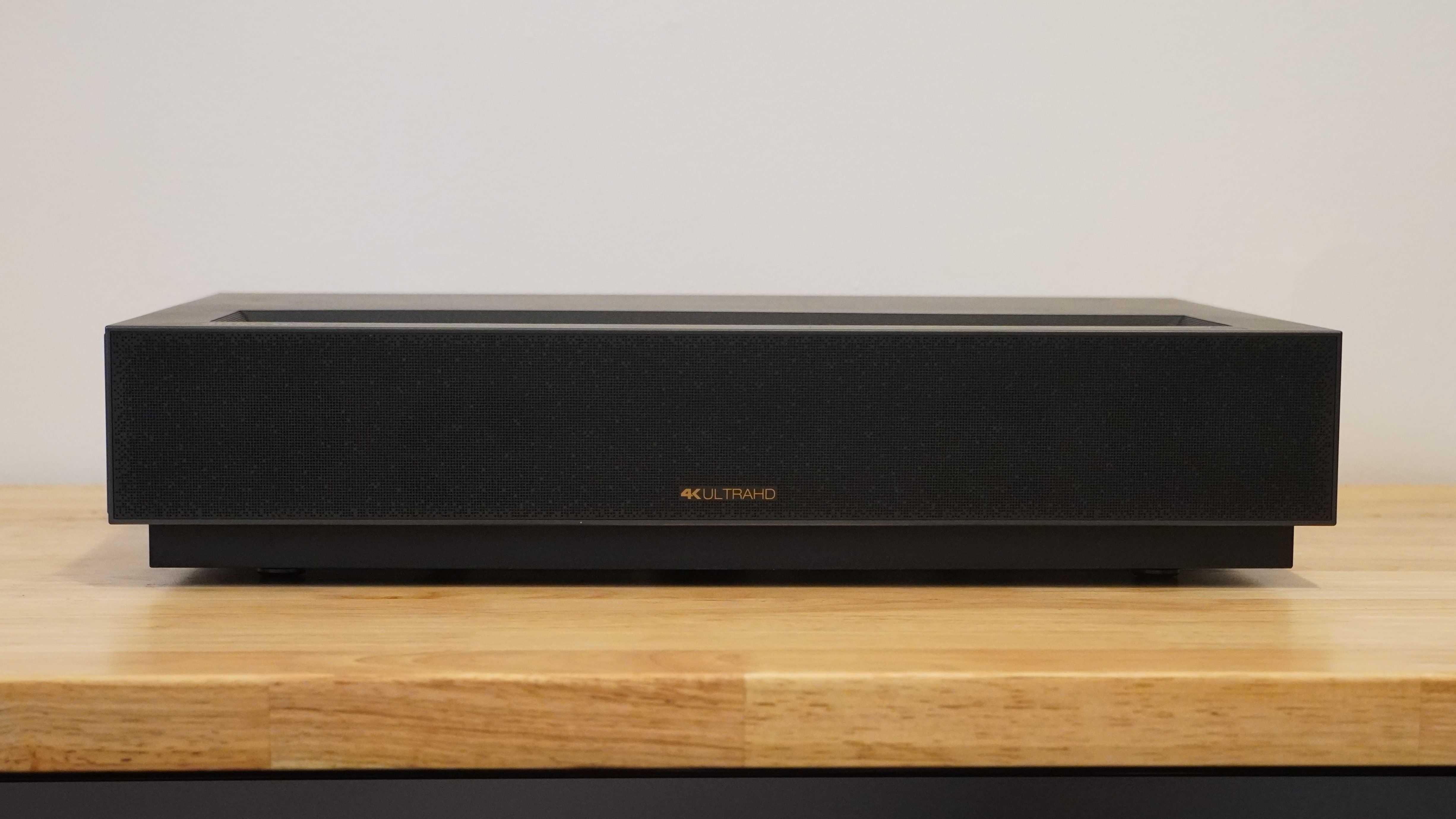
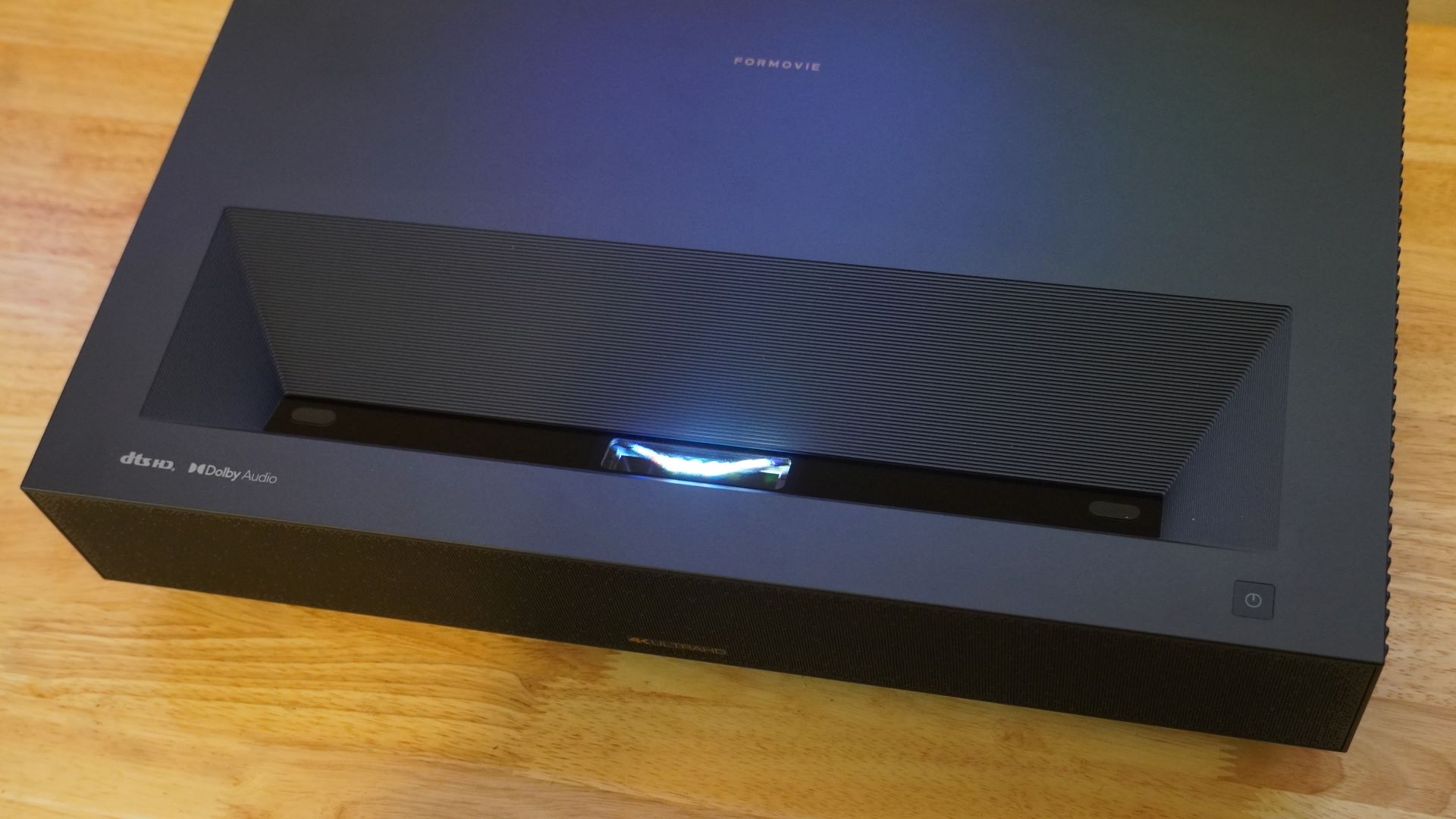
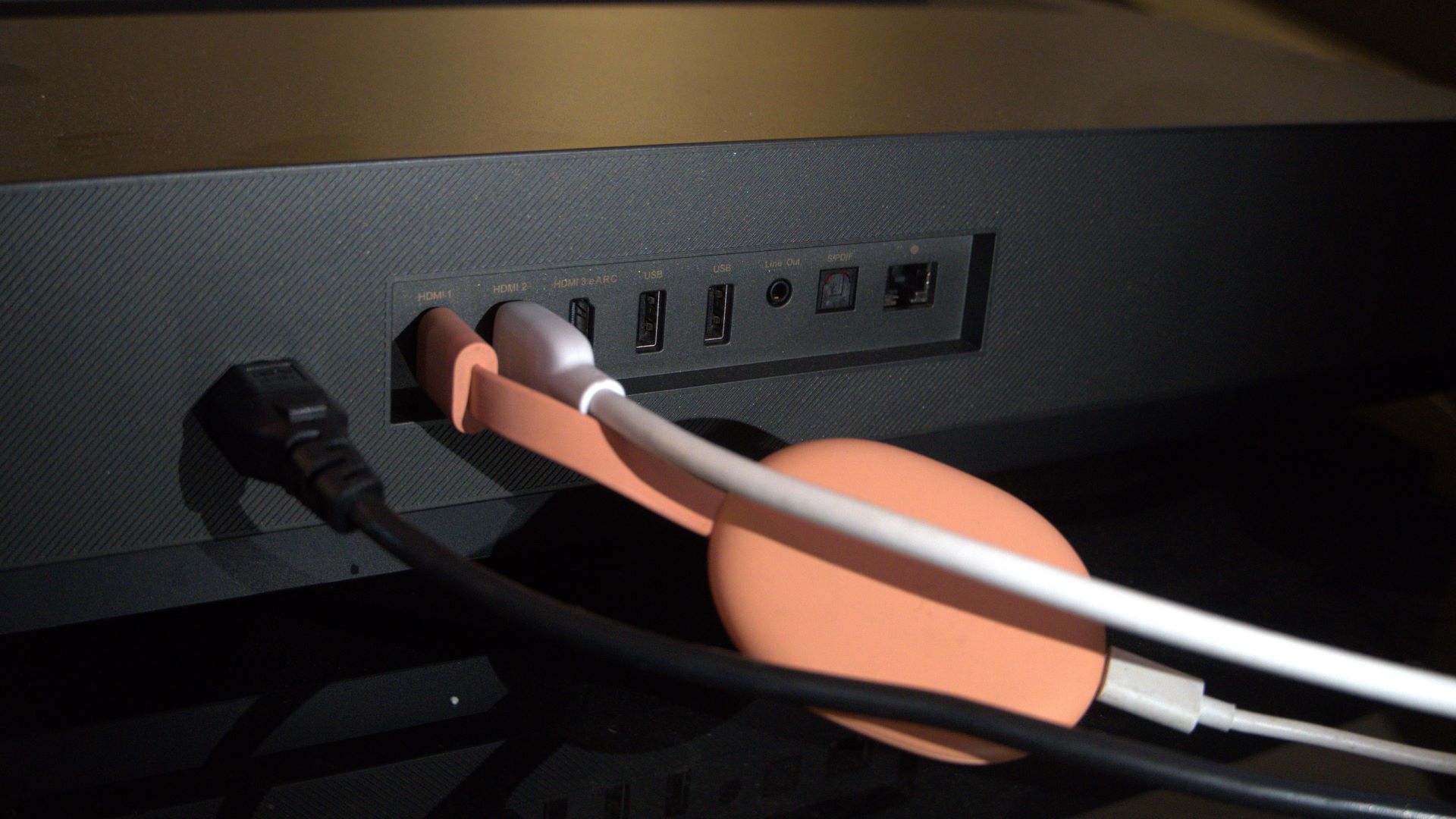
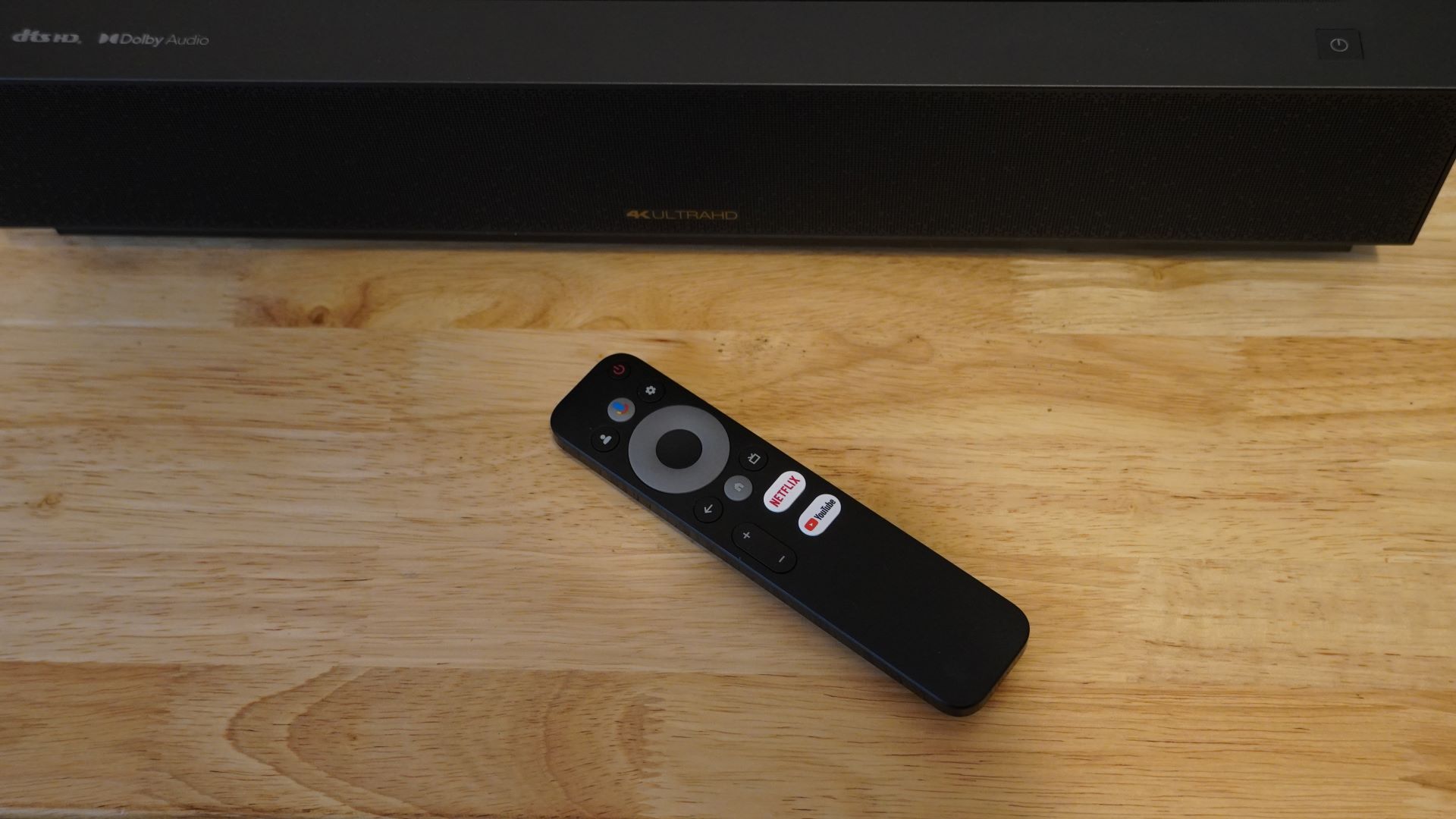

Specifications
Reasons to buy
Reasons to avoid
✅ You want a compact UST: The Cinema Edge is small compared to other UST projectors, but it can project a 120-inch image from only 33cm from a wall.
✅ You want advanced picture settings: There are plenty of settings in the Cinema Edge’s settings menu to adjust the picture to your liking.
❌ You want Dolby Vision or HDR10+ support: The Cinema Edge supports HDR10 and HLG, but not the more advanced HDR formats supported by other projectors.
❌ You want a great all-in-one system: Picture quality, sound, and streaming are all good here, but more demanding viewers may want a better smart interface and speakers.
Ultra short throw projectors can be expensive – other models in this guide such as the Hisense PX3-Pro and Samsung The Premiere 9 are proof of that – but budget options also exist if you’re looking for a 4K UST projector. One of the best is the Formovie Cinema Edge, a 4K UST that sells for $1,799.
When we tested the Cinema Edge, we appreciated its compact size and ability to beam a crisp-looking 120-inch image when positioned only 33cm from a wall, making it one of the more unobtrusive projection setups we’ve seen. Its strong contrast made dark movies like Alien “a joy to watch,” and its picture brightness was sufficient to make TV shows easy to watch even in a well-lit room. It does take some work to get pictures to look their best, but the Cinema Edge’s ample picture settings give you all the tools you’ll need.
In our review, we found that the Cinema Edge’s built-in speakers “deliver a half-decent volume level for a small living room,” though you’ll want to look into external audio options for a more dynamic sound experience, something its HDMI eARC, optical digital, and 3.5mm analog audio outputs easily allow for.
Not all is perfect with the Cinema Edge – we found its color and HDR handling to be lacking compared to more expensive models, and navigating its Google TV smart interface was sluggish. Those are just two of the areas where the Cinema Edge’s budget status stands out, but if you’re looking for a 4K ultra short projector that doesn’t cost too much and doesn’t take up much space, this is about as good as they get.
Read our full Formovie Cinema Edge review
The best 4K projector for sound
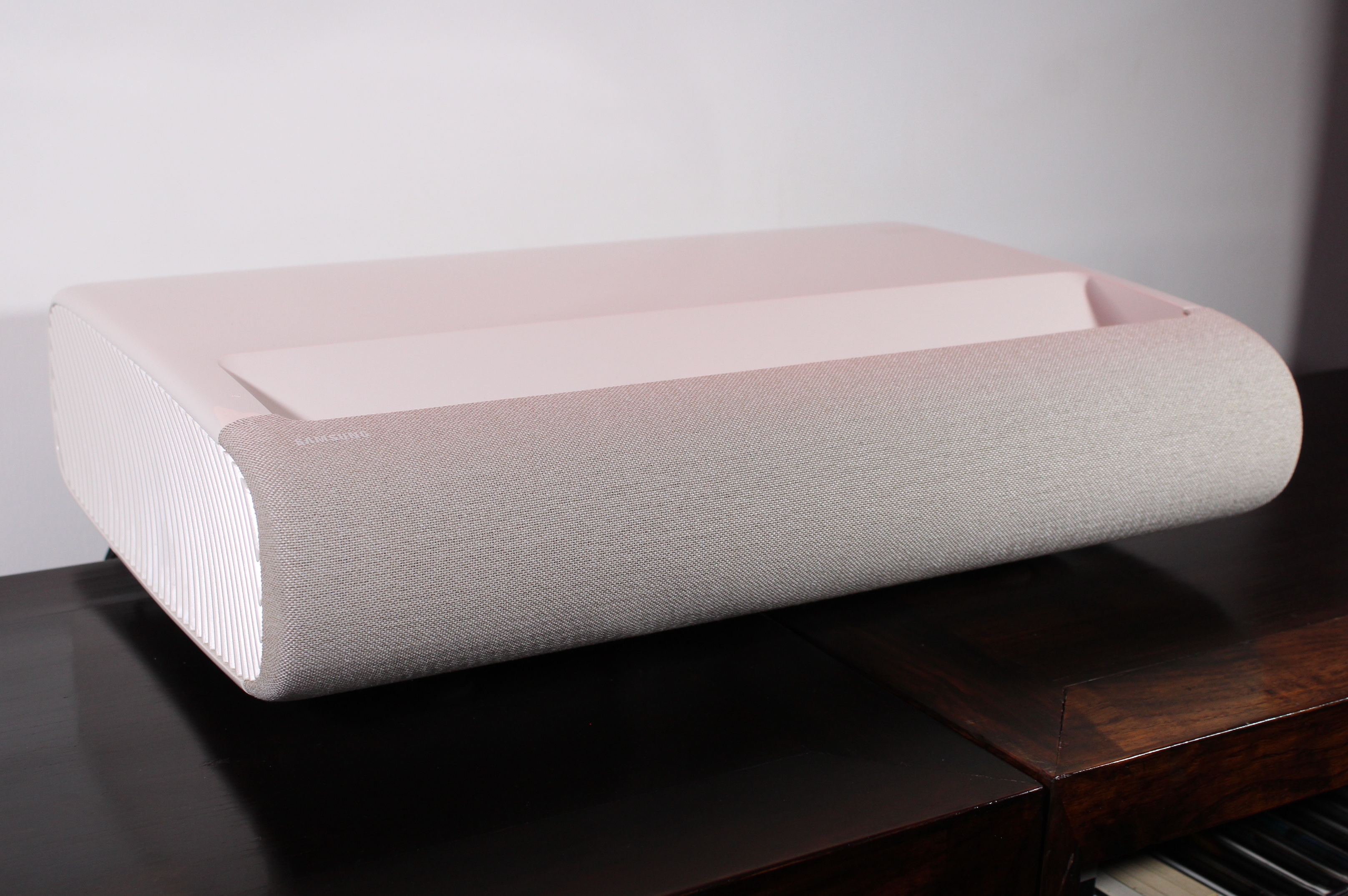
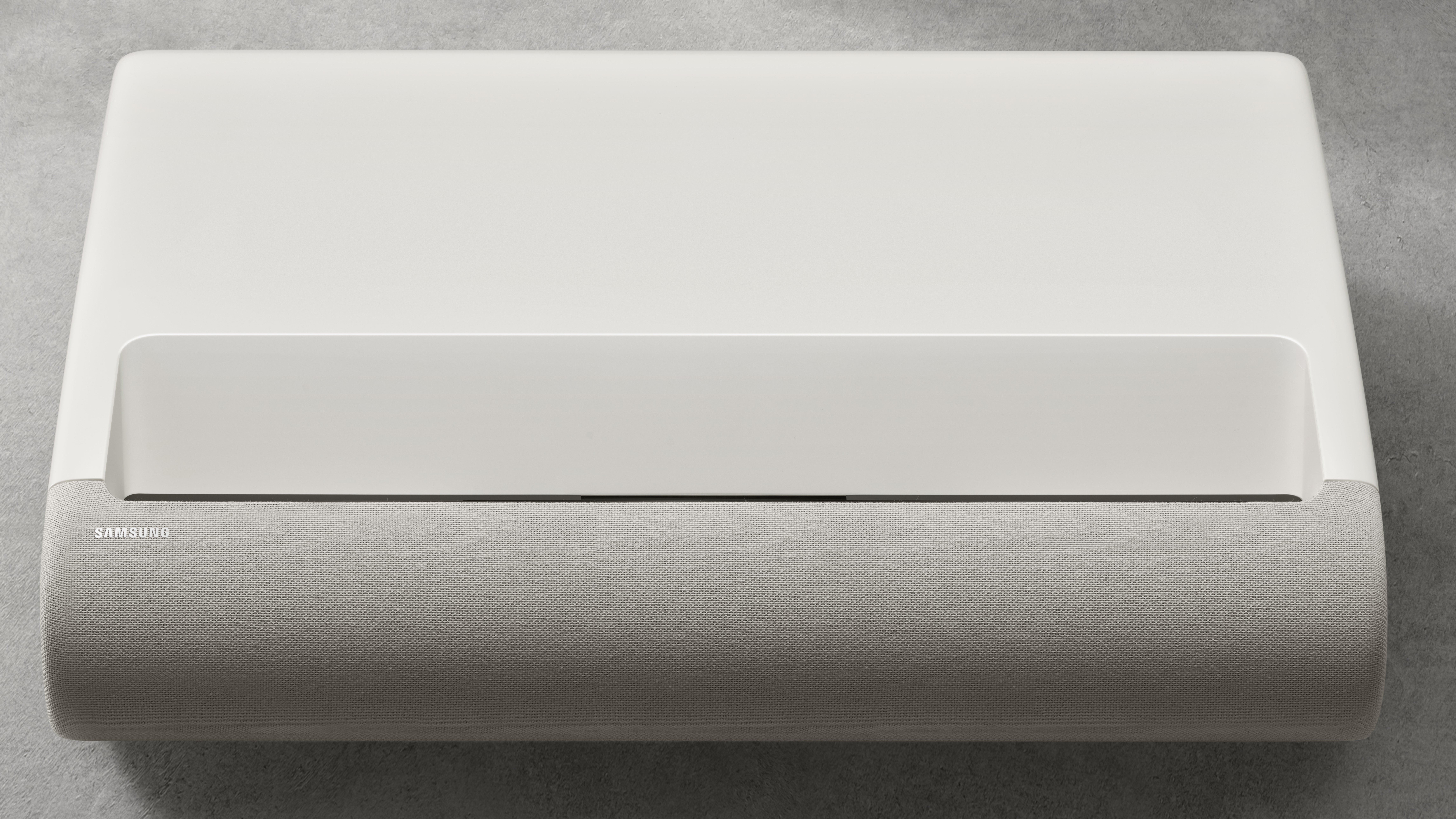
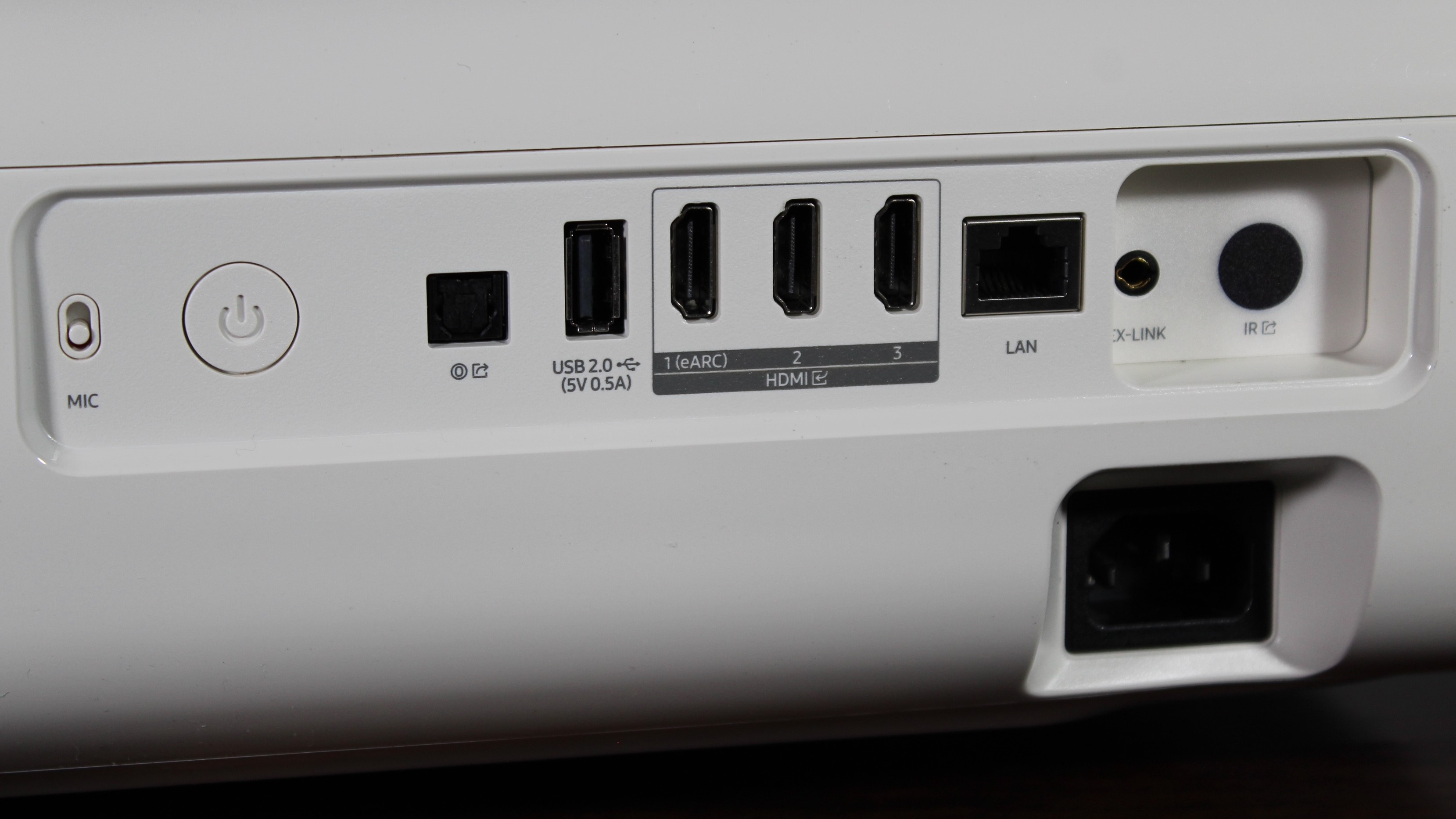
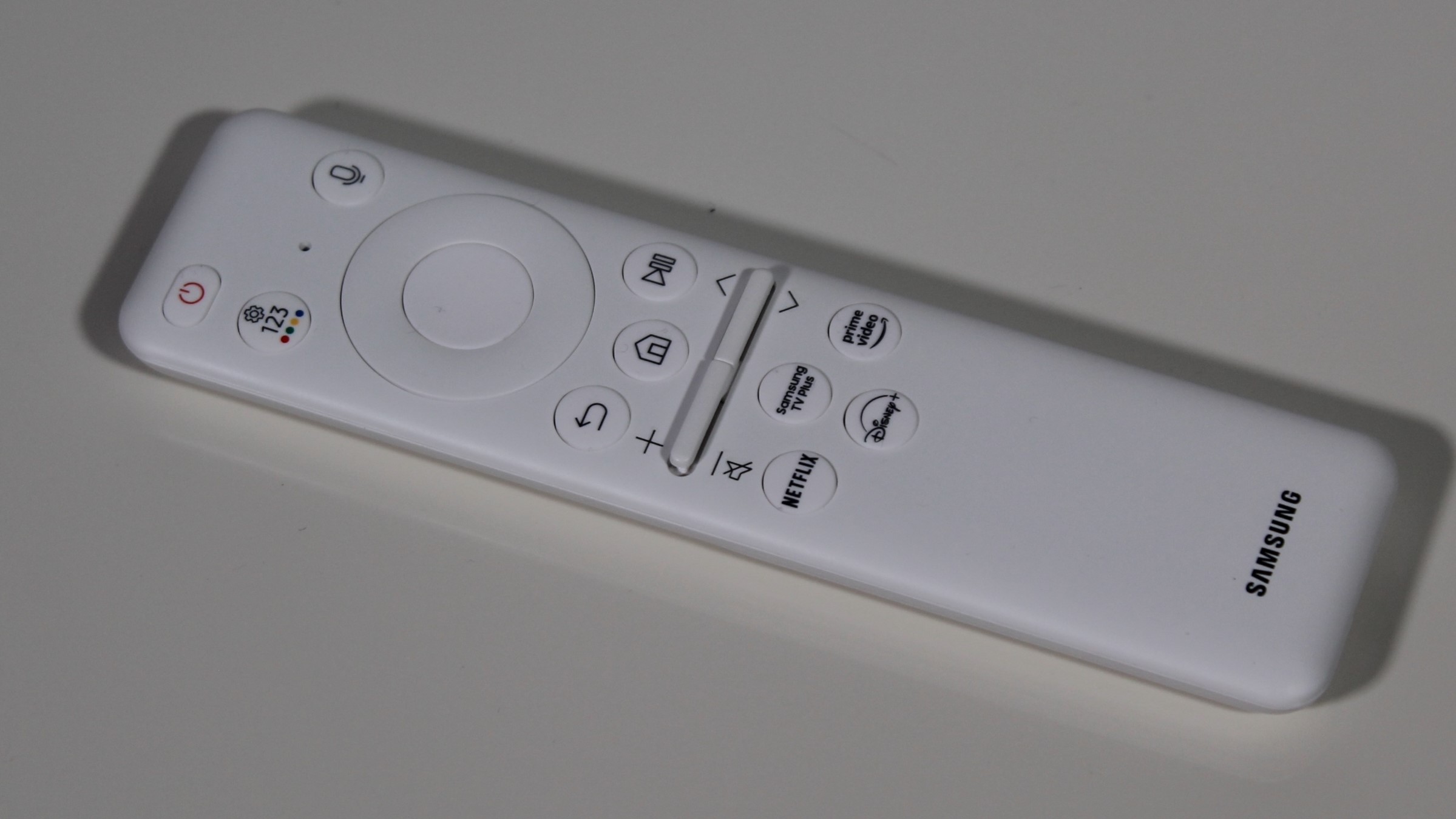
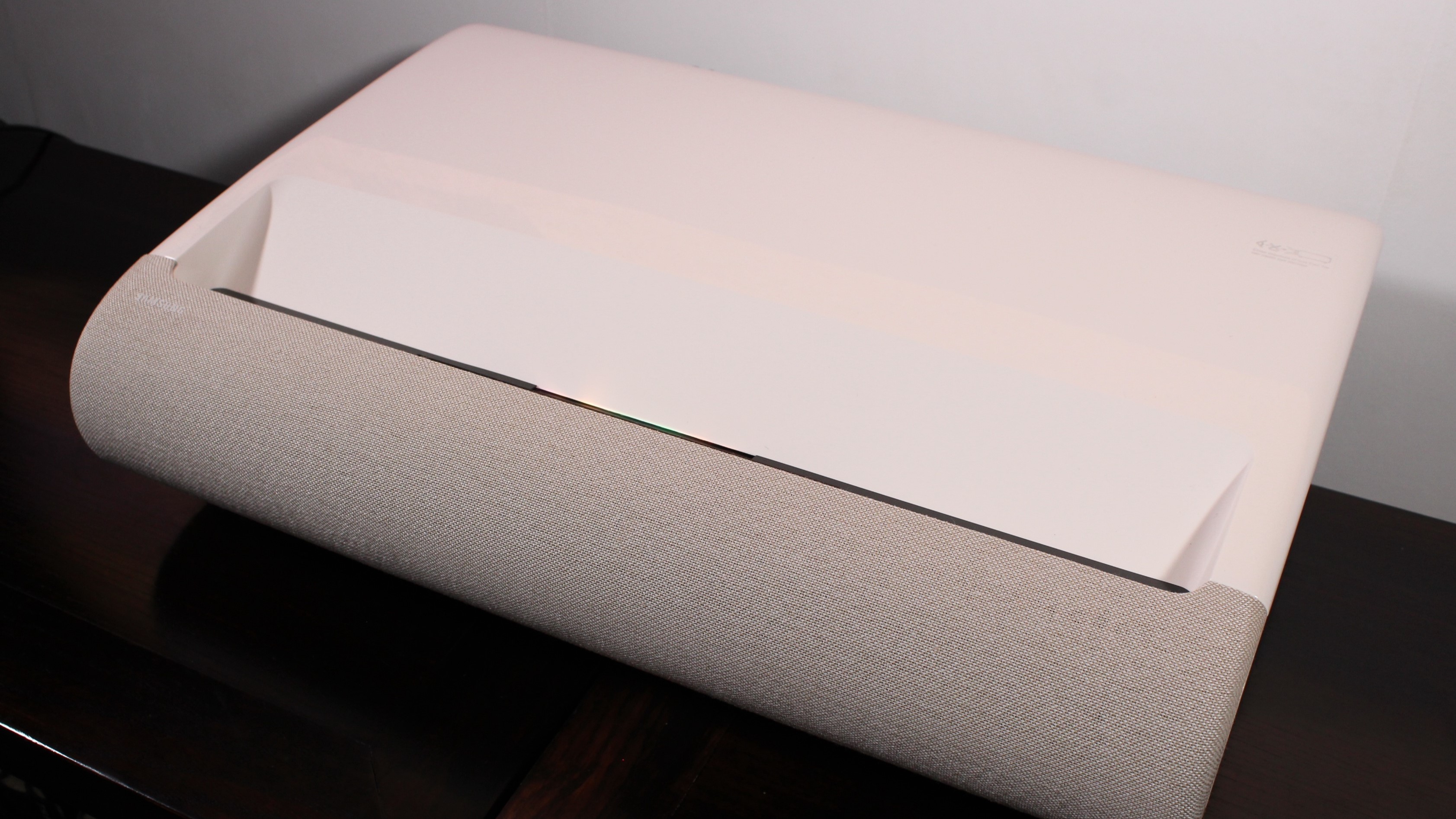
Specifications
✅ You want a projector that looks good: Not only does The Premiere 9 have great picture quality, but the projector itself has a living room-friendly gloss white and gray mesh fabric design.
✅ You want a projector with great sound: The Premiere 9 has excellent sound for an ultra short throw projector, delivering a sonic image with a height and width to match its up to 130-inch pictures.
❌ You want Dolby Vision HDR support: Some newer UST projectors provide Dolby Vision HDR, but that's not a feature supported on any Samsung TVs or projectors to date.
❌ You want to save money: Although packed with great features, The Premiere 9 is pricier than many other UST projectors, so if you want the best value look to the Hisense L9G instead.
Samsung’s first The Premiere earlier held the slot as the best 4K projector for sound in this guide, but its new, next-gen The Premiere 9 bumped it by delivering better brightness, a more polished design, and, yes, better sound with the addition of Samsung’s Object Tracking Sound (OTS) AI-enhanced audio processing.
Like the earlier model, The Premiere 9 is a 4K ultra short throw projector that uses a triple-laser light engine, this one specced for an impressive 3,450 ISO lumens light output. Our testing found the Premiere 9 to have bright, punchy pictures with excellent out-of-box accuracy. Sound quality was equally good, with our review citing an “immersive soundstage, with clear dialogue, width at the front, some bass presence, and effectively rendered overhead sound.”
Along with its great picture and sound quality, Samsung’s The Premiere 9 uses the company’s Tizen Smart TV system for streaming and supports both Amazon Alexa and Samsung’s Bixby voice commands. And while it’s not the greatest option for gaming with a 60Hz refresh rate and just-average (for a projector) 53ms input lag, we still enjoyed gaming with it and also appreciated Samsung’s built-in Gaming Hub with cloud-based gaming apps from Xbox, Nvidia, GeForce Now, Amazon Luna, and others.
Read our full Samsung The Premiere 9 review
The best 4K projector for sports
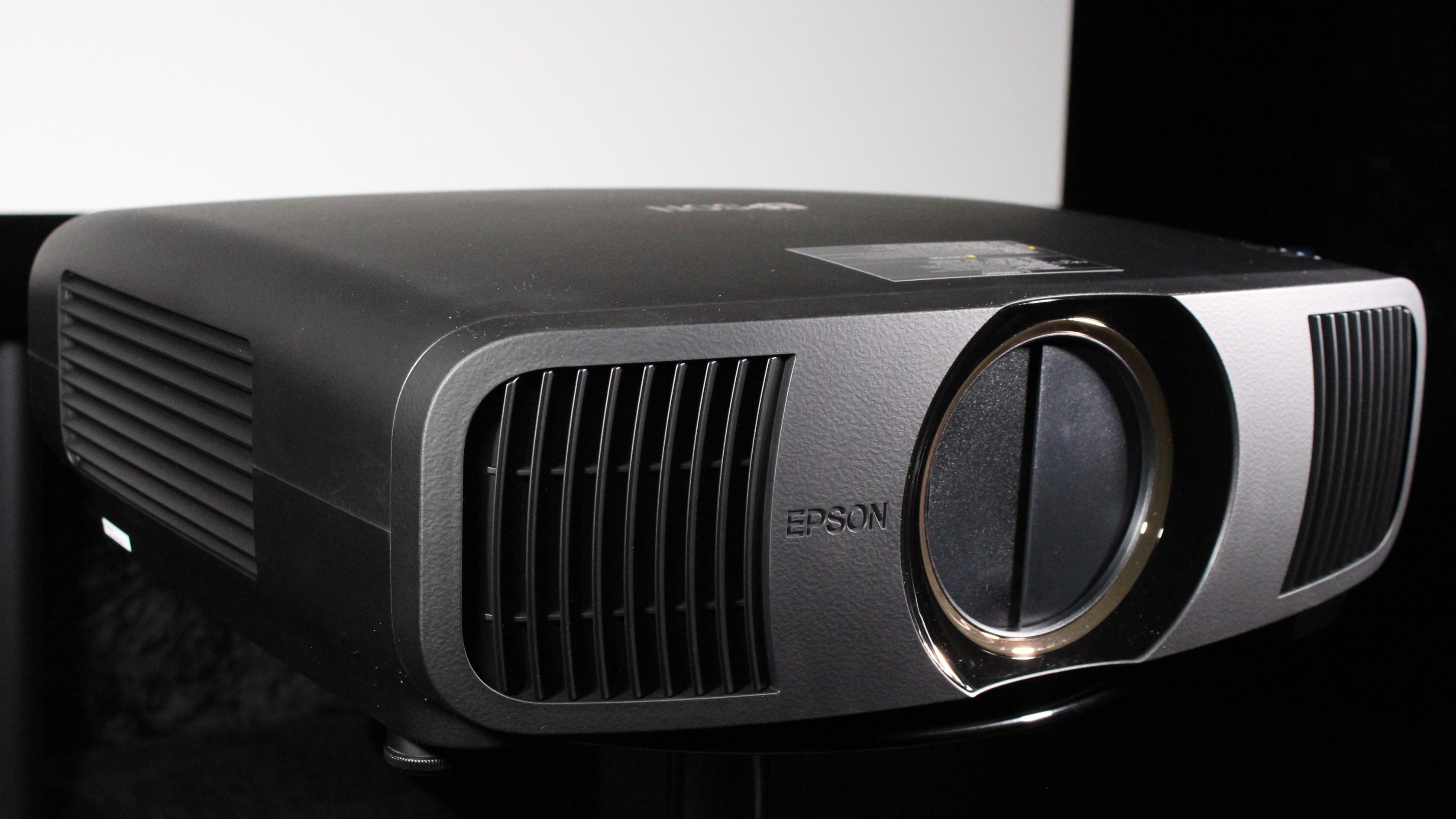
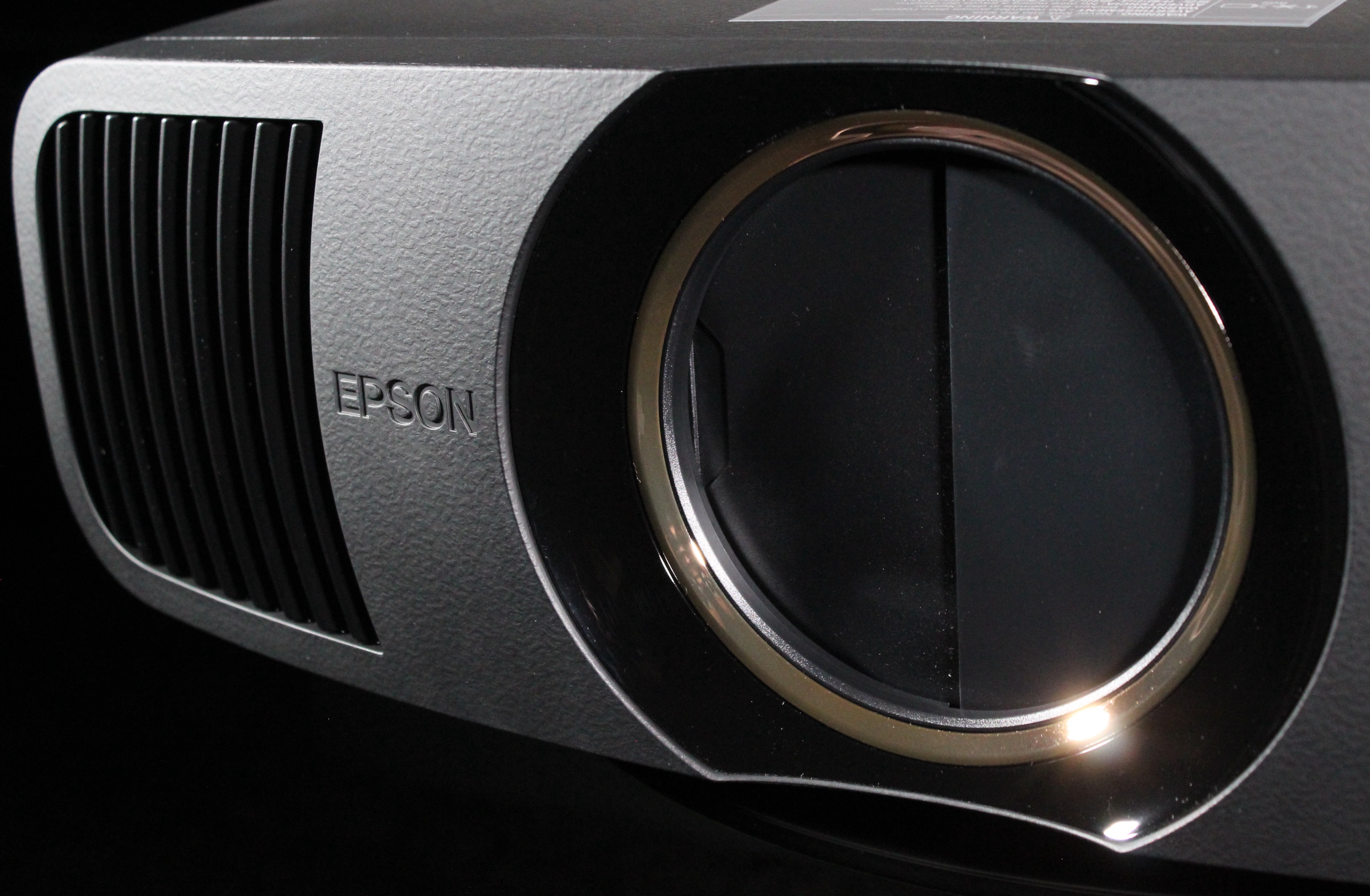
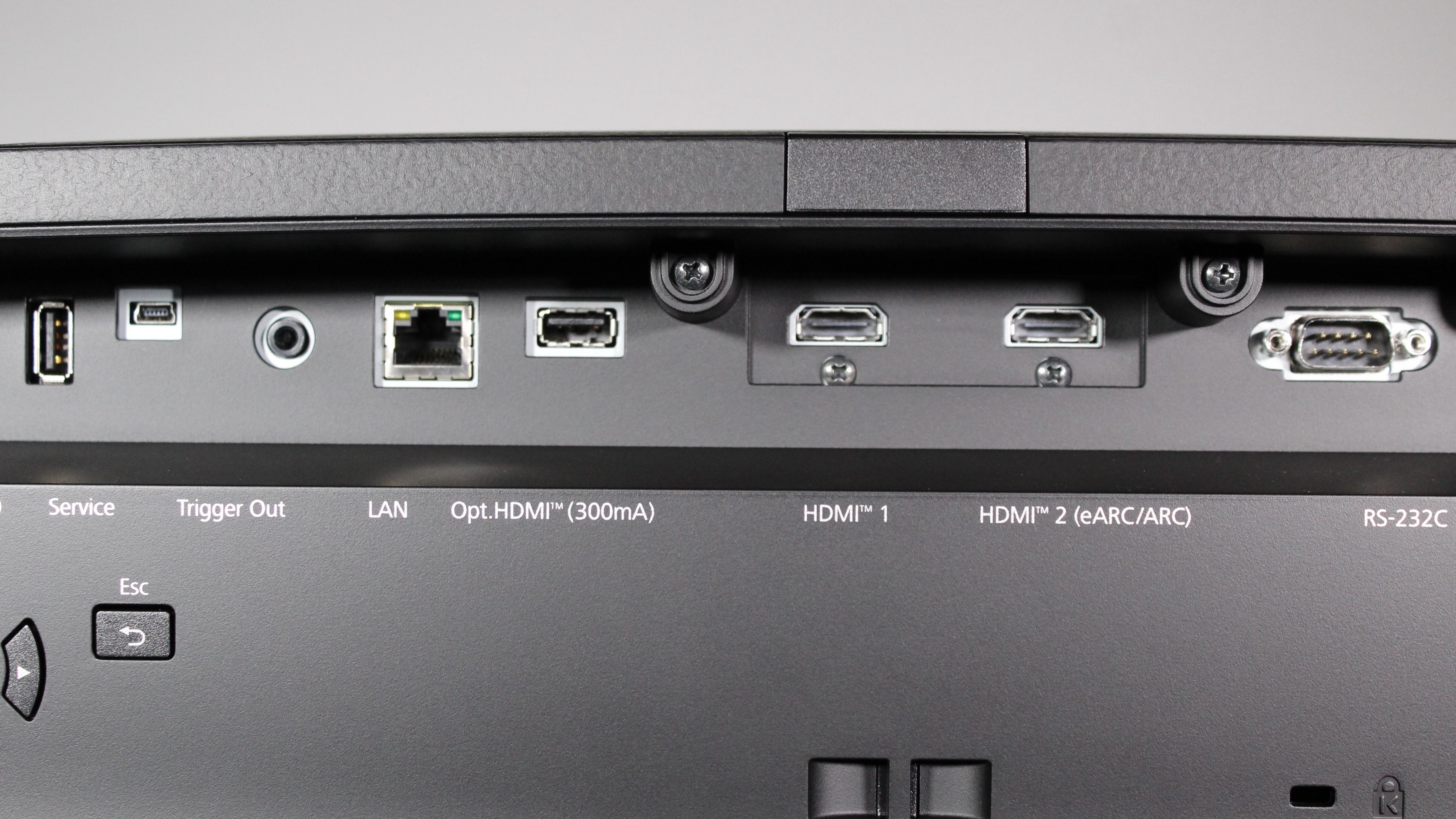
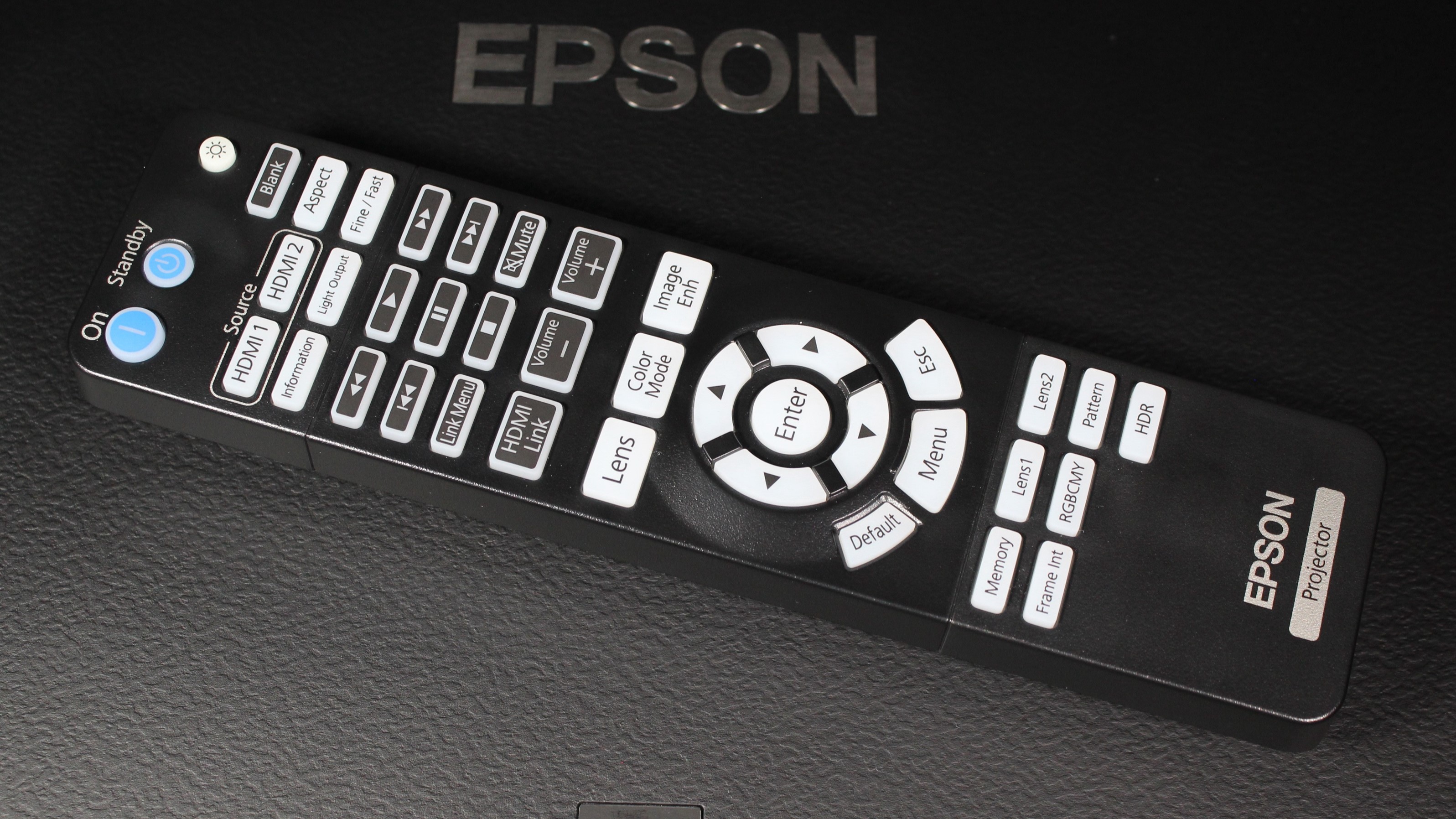
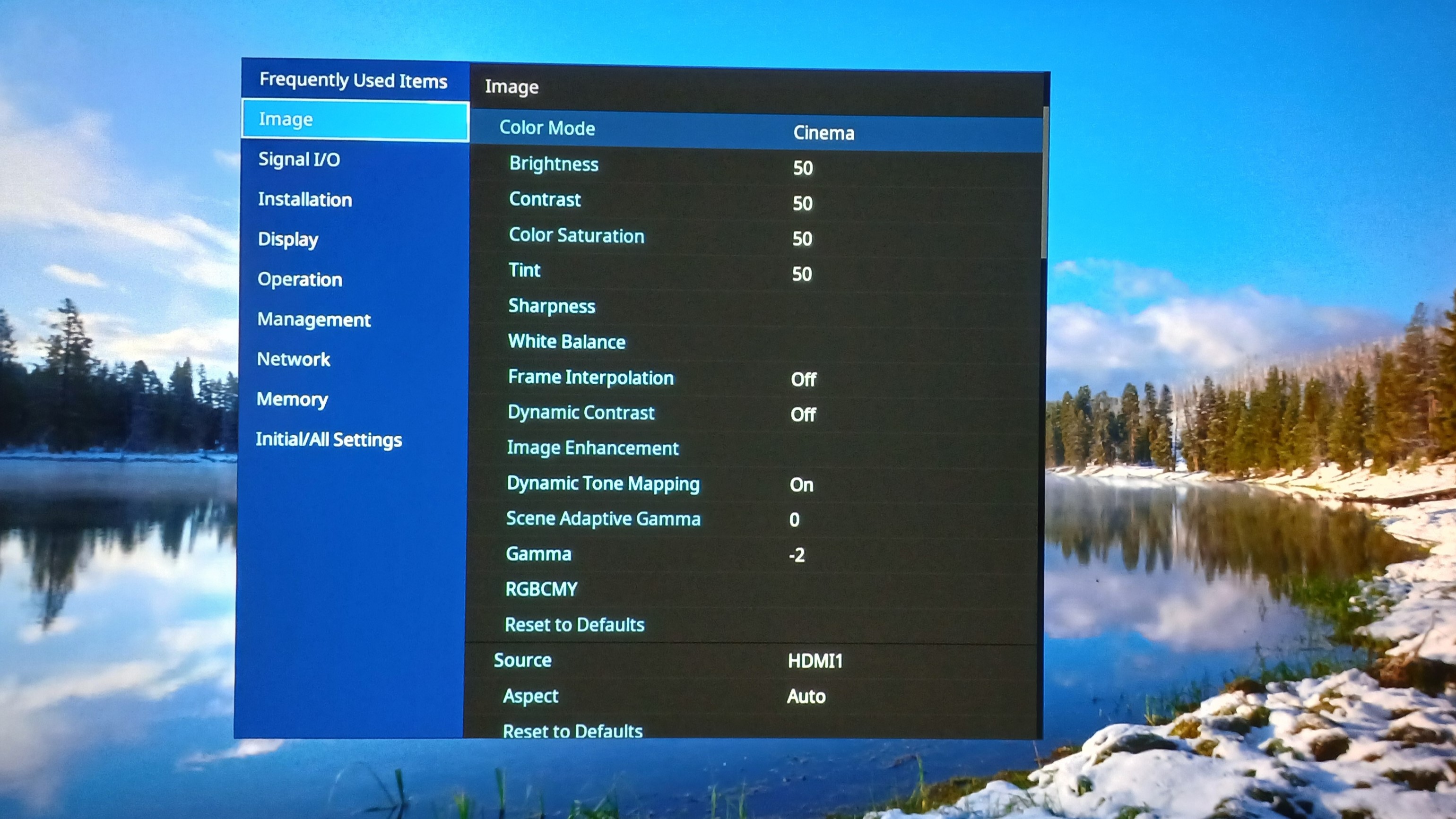
Specifications
Reasons to buy
Reasons to avoid
✅ You want to watch in a brighter space: The Epson QB1000’s 3,300 lumens picture is bright enough to accommodate brighter rooms with light-colored walls, making it a great option for sports.
✅ You want a great projector for gaming: The QB1000 has two HDMI inputs with 4K 120Hz support. That and its low 19ms input lag in Game mode make it perfect for gaming.
❌ You want an all-in-one projector system: The QB1000 is designed to beam images only – there’s no built-in speakers or streaming platform like you’ll find in many short throw projectors.
❌ You want 3D support: Epson projectors no longer support 3D viewing, so if you’re a fan of that format you’ll need to look at other projectors on this list such as the JVC NZ800 or Hisense PX3-Pro.
If you’re looking for a great 4K long-throw projector for sports, the Epson QB1000 is highly recommended. This model combines stunning high brightness with excellent motion handling, and features like 4K 120Hz support and a Game picture mode with low (19ms) input lag also make it a great option for gaming.
While the model we tested had a black casing, the QB1000 is also available in a living room-friendly white color option. Its 3LCD laser light engine delivers 3,300 lumens light output, which is significantly higher than much of its long-throw 4K projector competition, many of which top out at 2,000-2,500 lumens.
As we said in our review, “The QB1000 has sufficient brightness to handle rooms with light-coloured walls.” That means it doesn’t have to be relegated to a dark, cave-like home theater room, but can deliver satisfying pictures in a range of environments. We also noted that Epson’s improved frame interpolation in the QB1000 makes it “very effective when watching fast-paced sports,” and it has HDR10+ support for watching movies and TV shows with that format’s dynamic metadata, which optimizes pictures on a shot-by-shot basis.
The QB1000 is otherwise a basic projector – you’ll need to add speakers and a streaming box or stick to get a full experience. If you’re looking for an all-in-one 4K projector solution with built-in speakers and streaming capability, we’d also recommend the Epson EpiQVision Ultra LS800, which is the best for sports option in our best ultra short throw projectors guide.
Read our full Epson QB1000 review
The best 4K projector for gaming
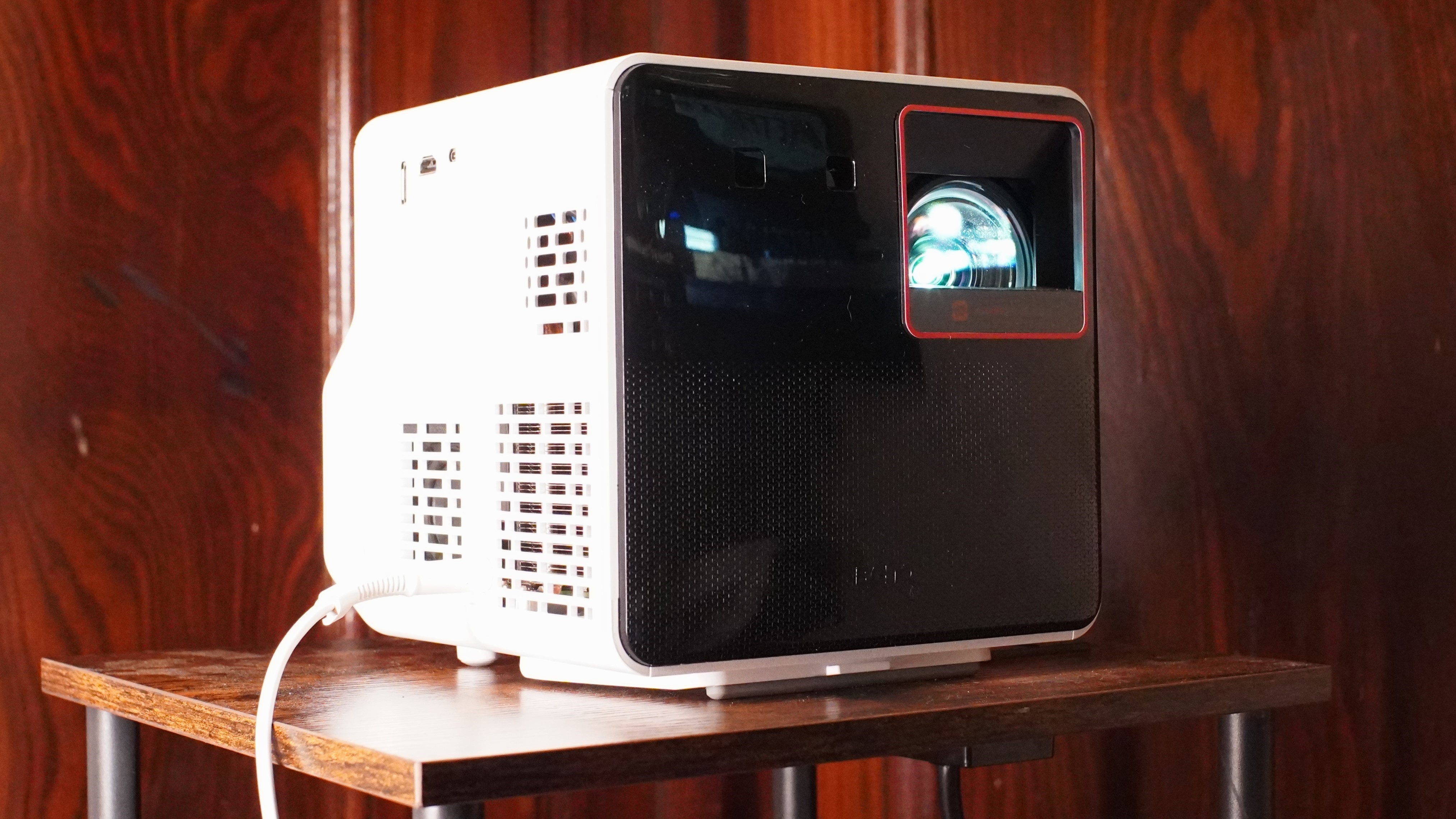
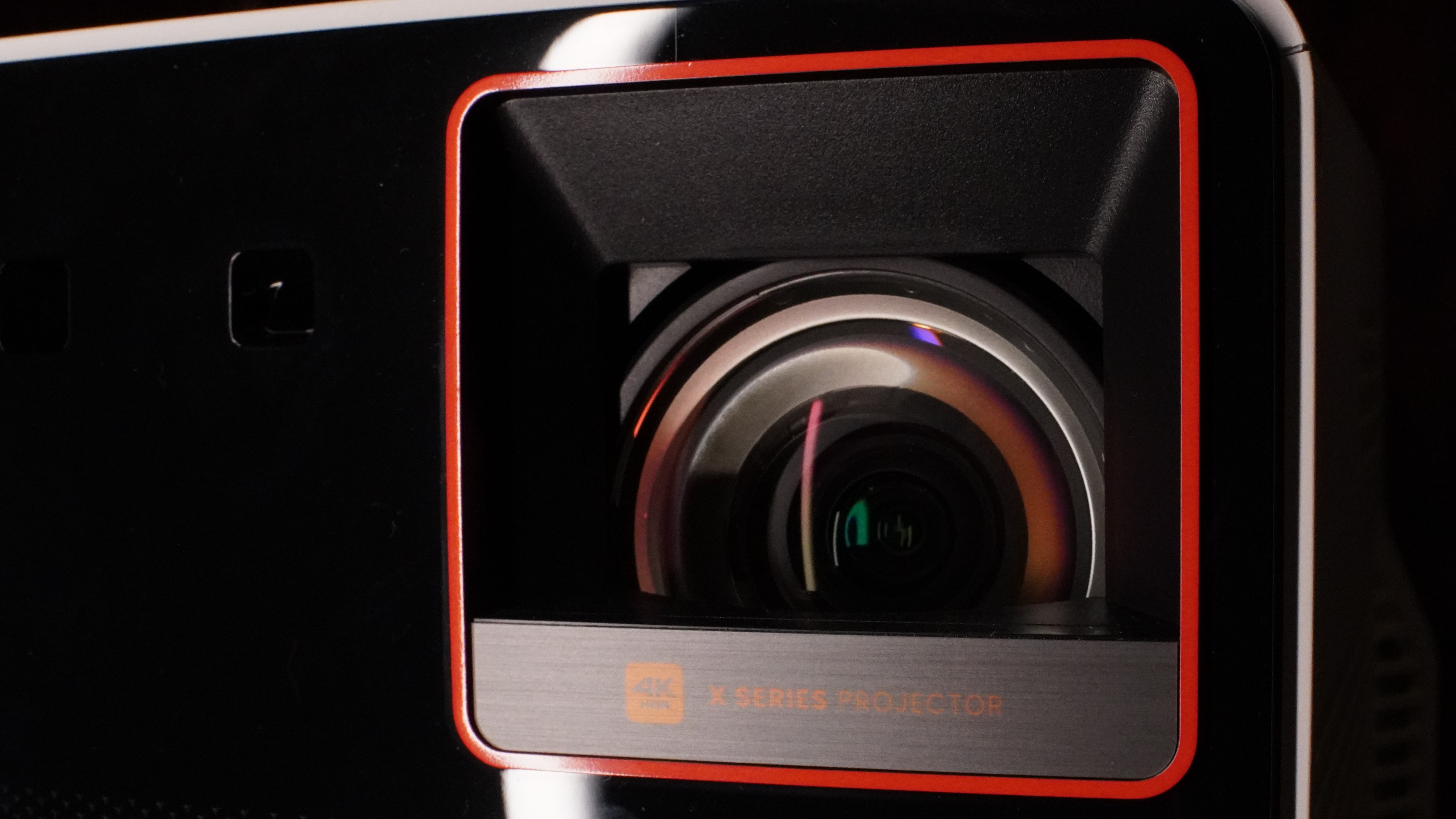
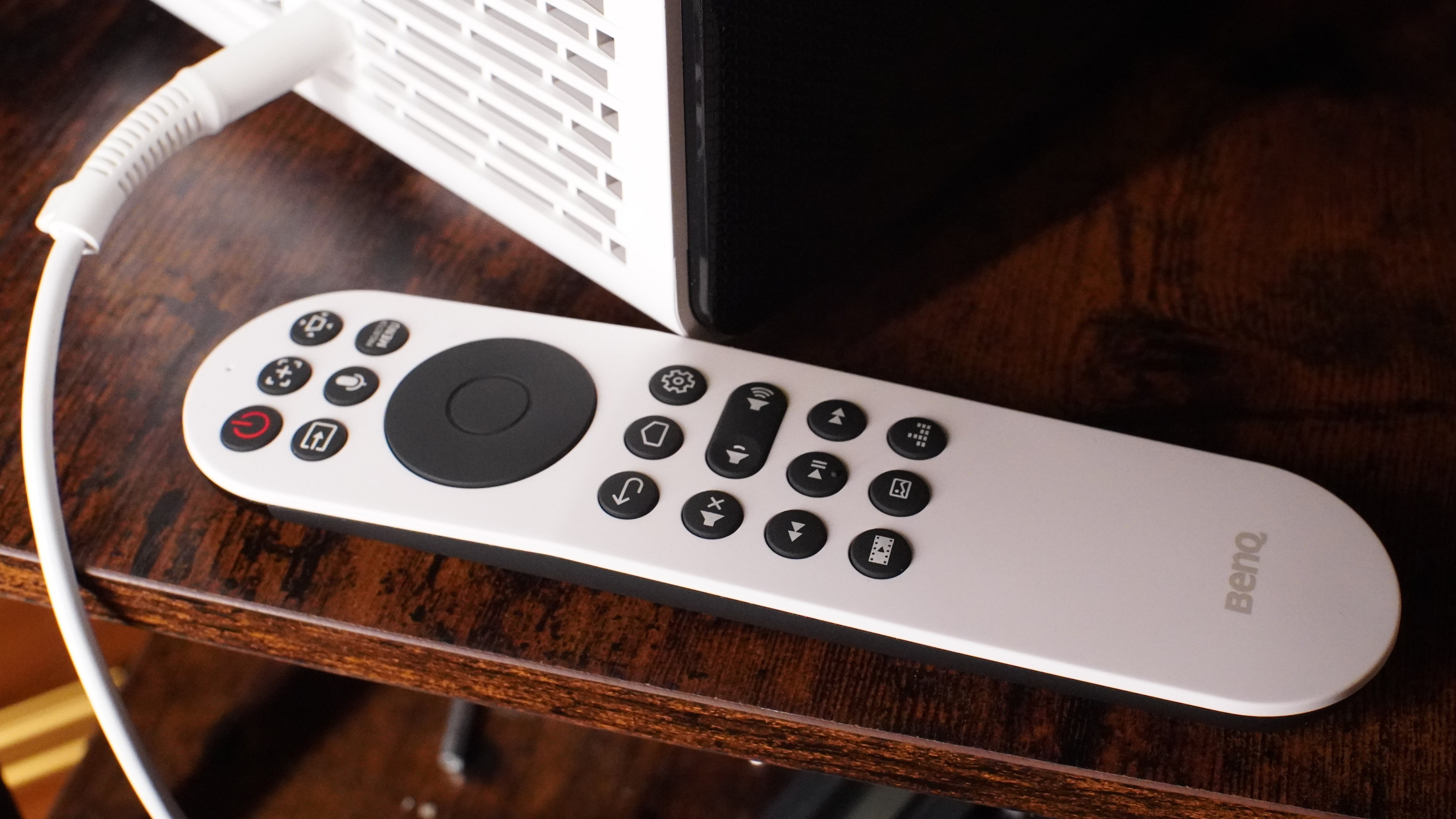
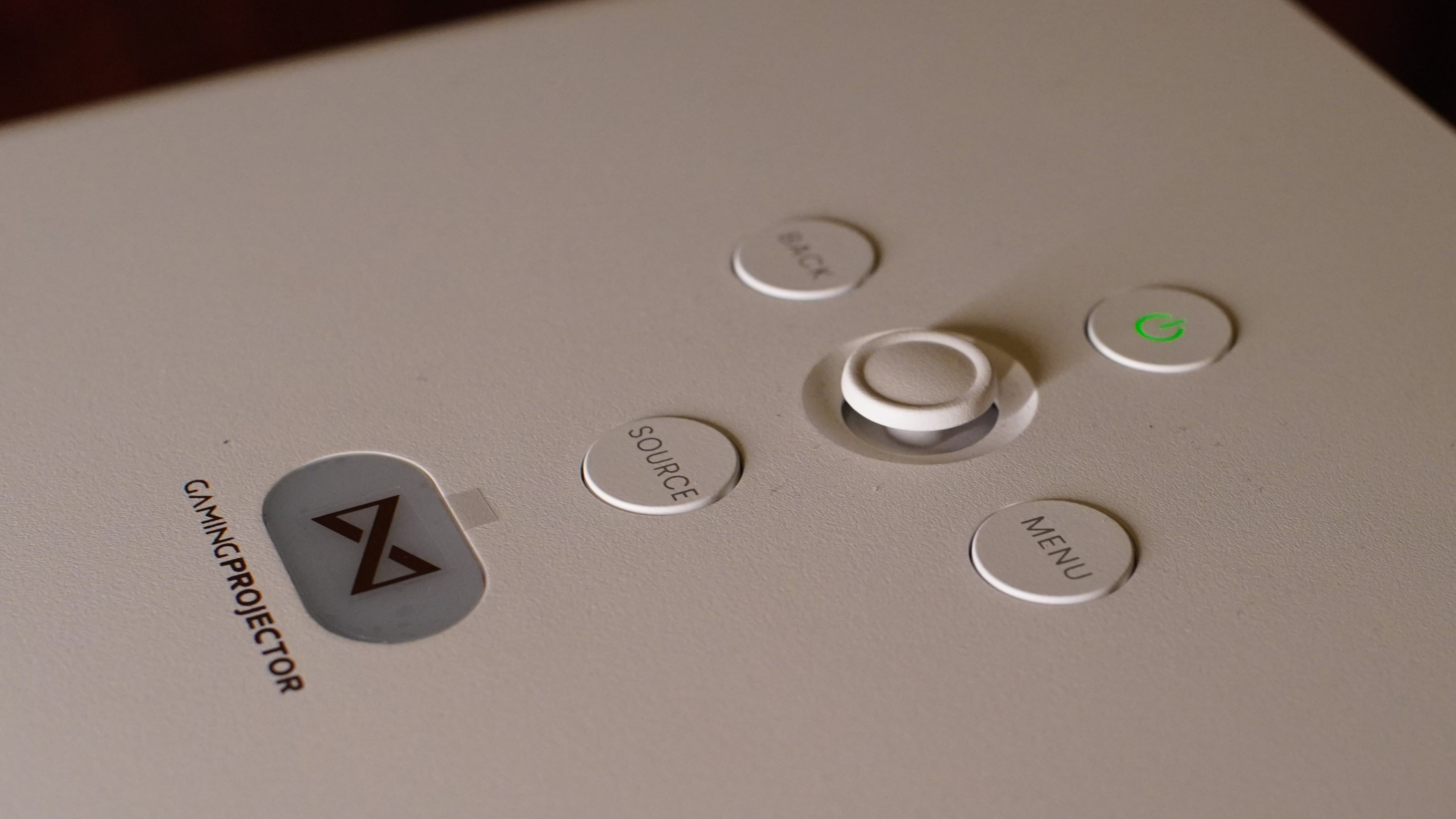

Specifications
✅ You want a projector for gaming and movies: The BenQ X300G’s support for 1080p at 240Hz input is a great feature for gaming, and its picture also holds up very well for watching movies.
✅ You want portability: The X300G technically isn’t a portable projector, but its design is compact and lightweight enough that it can be easily packed up and moved from place to place.
❌ You want high brightness: At 2,000 lumens, the X300G’s picture is less bright than most other projectors in our guide, but it’s also one of the most affordable models.
❌ You want great built-in sound: The X300G’s built-in speakers do a decent job in smaller rooms, but if you crank the volume up high, the sound can become grating.
The BenQ X300G is mainly a gaming projector, but it’s also great for movies. And at $1,799 (around £1,400 / AU$2,720), it’s also affordable for a 4K projector. While not technically a portable model, the X300G’s small-ish form factor – it takes up less than a cubic foot of space – makes it easy to move from room to room.
This DLP projector’s LED light engine is rated for 2,000 lumens brightness. It features the Android TV system for streaming from apps (via an included dongle) and has an HDMI 2.0 port with eARC, and a USB-C port with DisplayPort support – a somewhat rare feature for a projector. A built-in 2.1-channel speaker system delivers reasonably potent sound, and there are manual adjustments for focus, zoom, and keystone.
The main reason why we selected the BenQ X300G as our best 4K projector for gaming is its ability to display 1080p images at a 240Hz refresh rate. In our review of the projector, we cited its “stunning pixel response time that’s virtually free of ghosting” when gaming. The ability to switch between 4K for movies and 1080p / 240Hz for gaming is a powerful feature, and it makes the X300G a highly flexible projector option.
Read the full BenQ X300G projector review
The best premium 4K projector for gaming
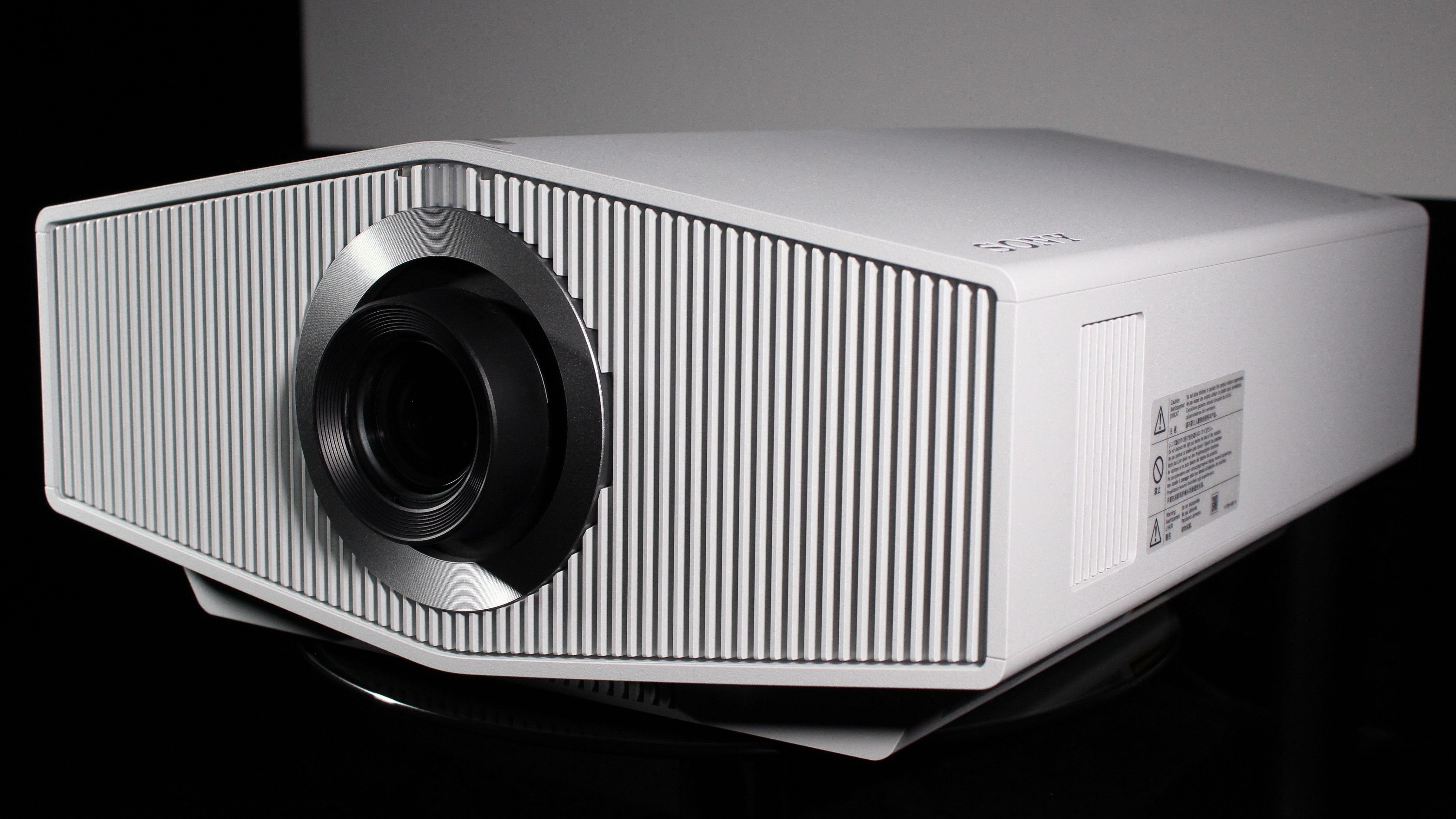
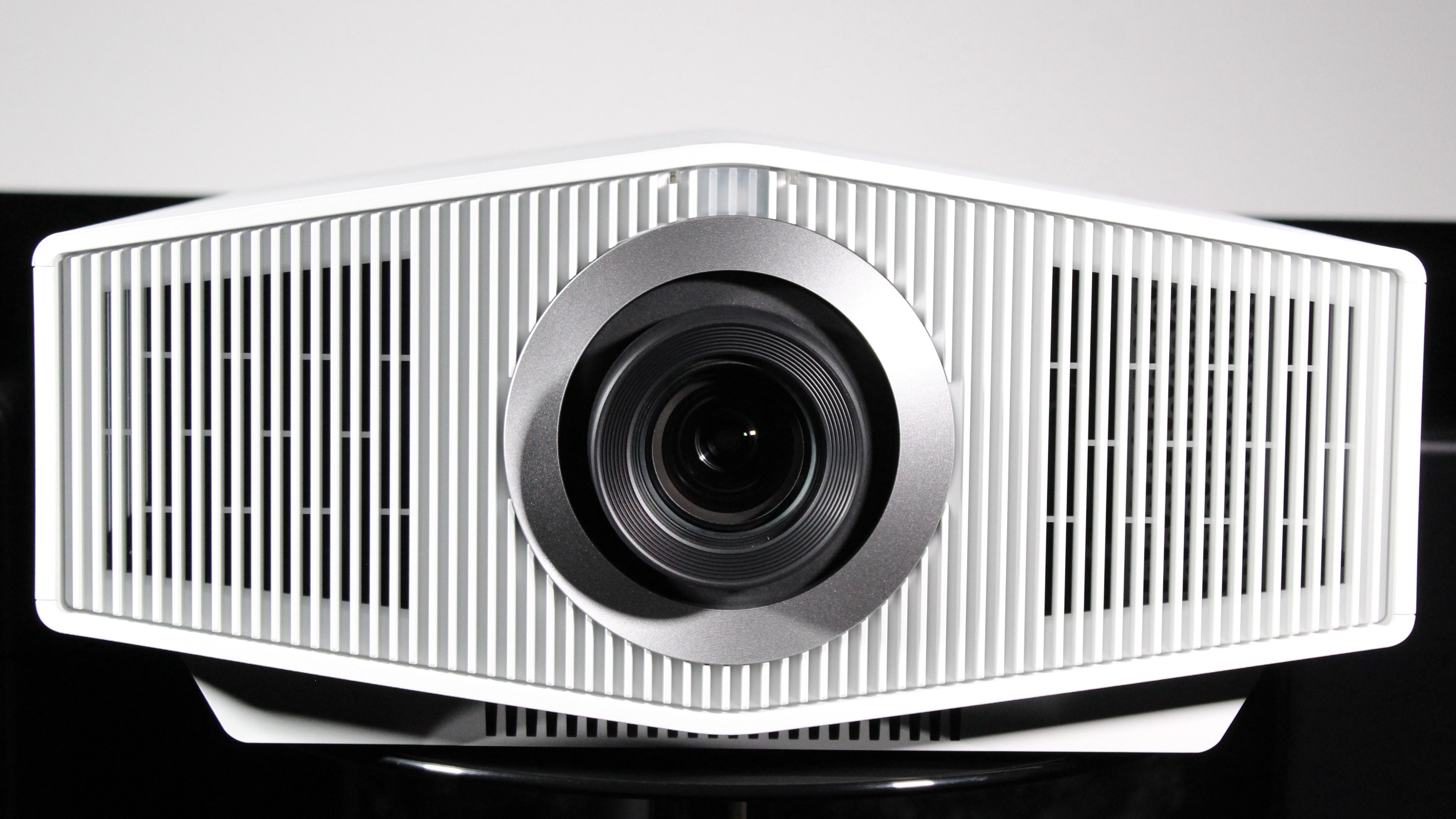
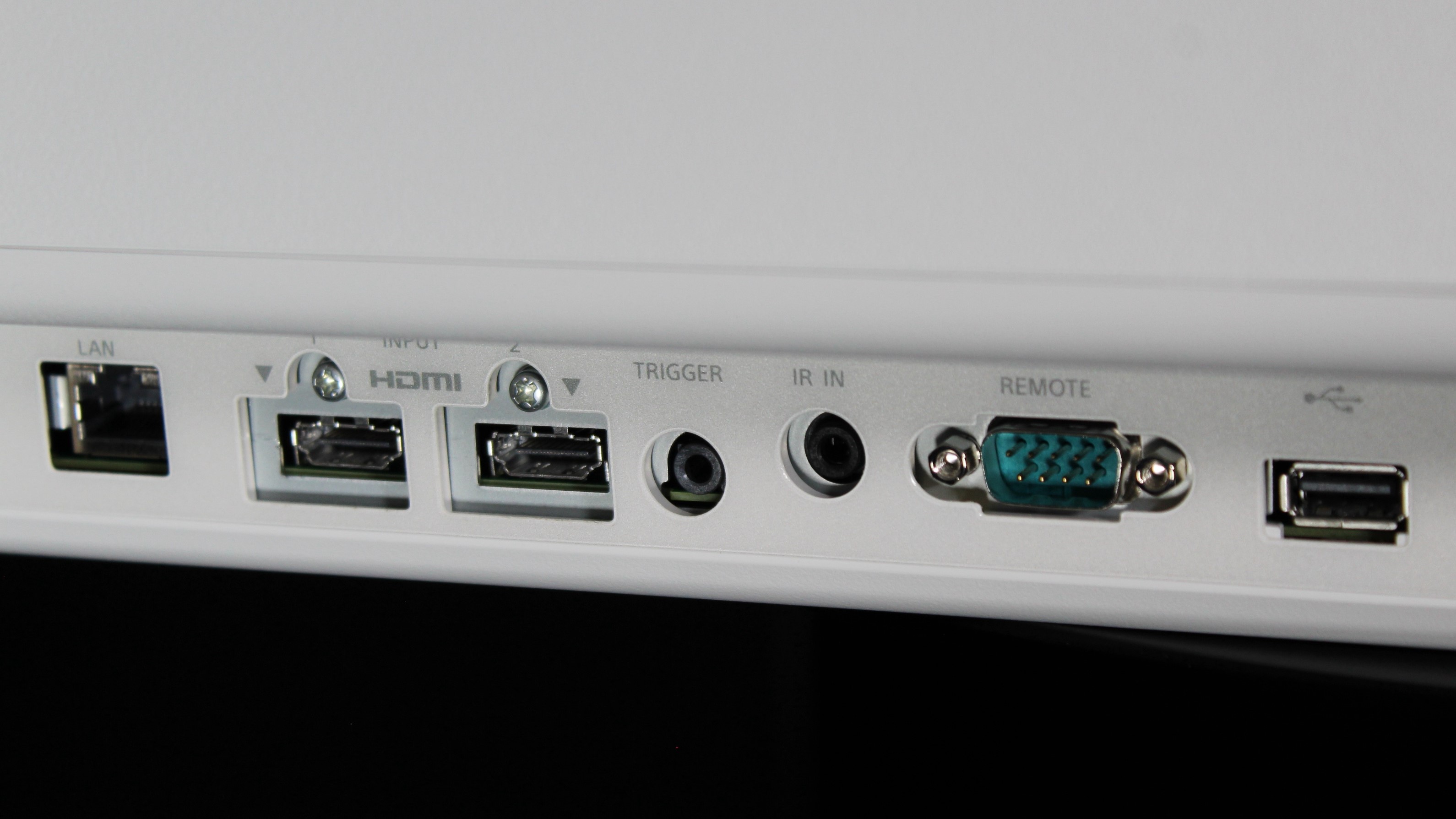
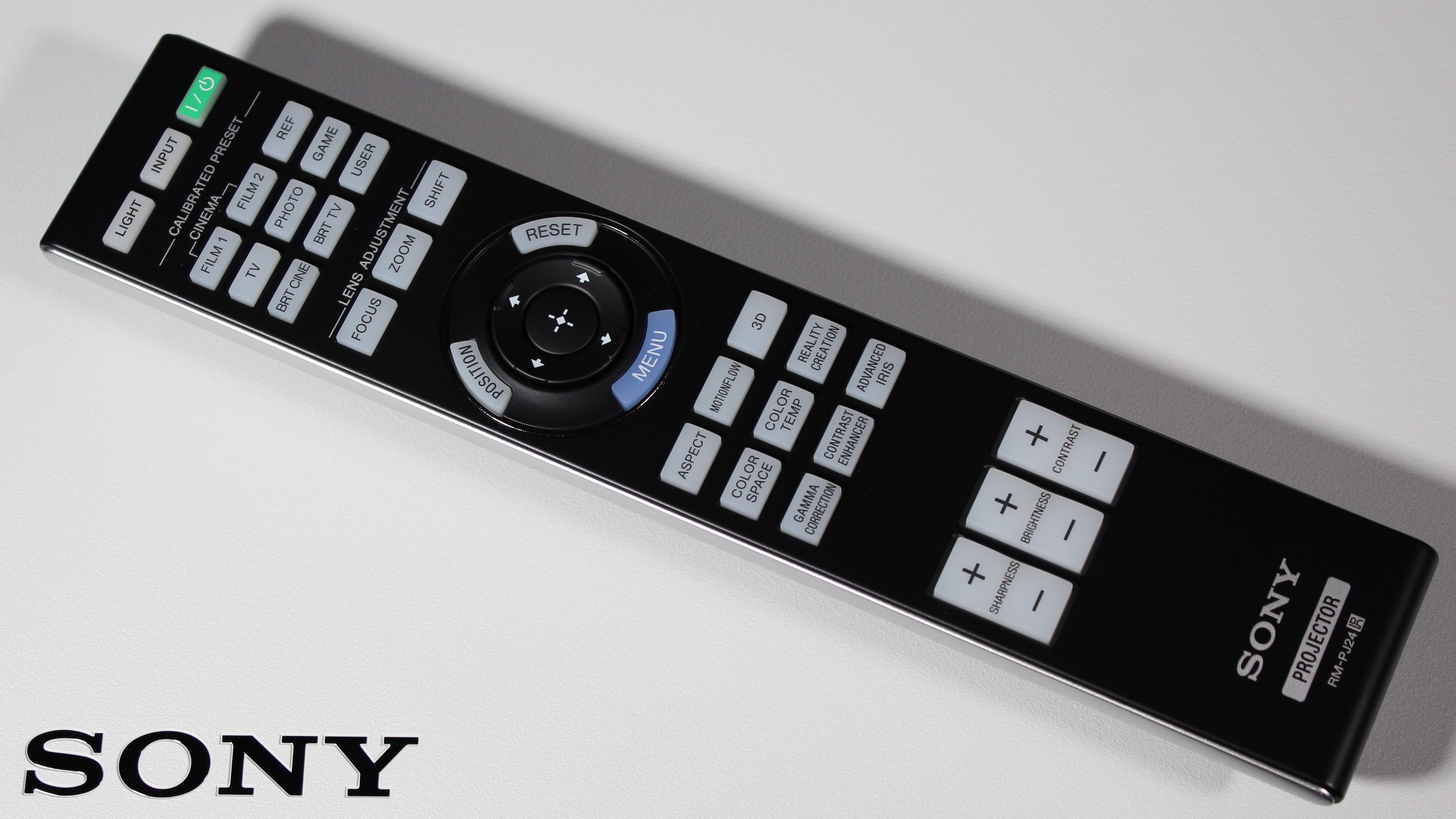
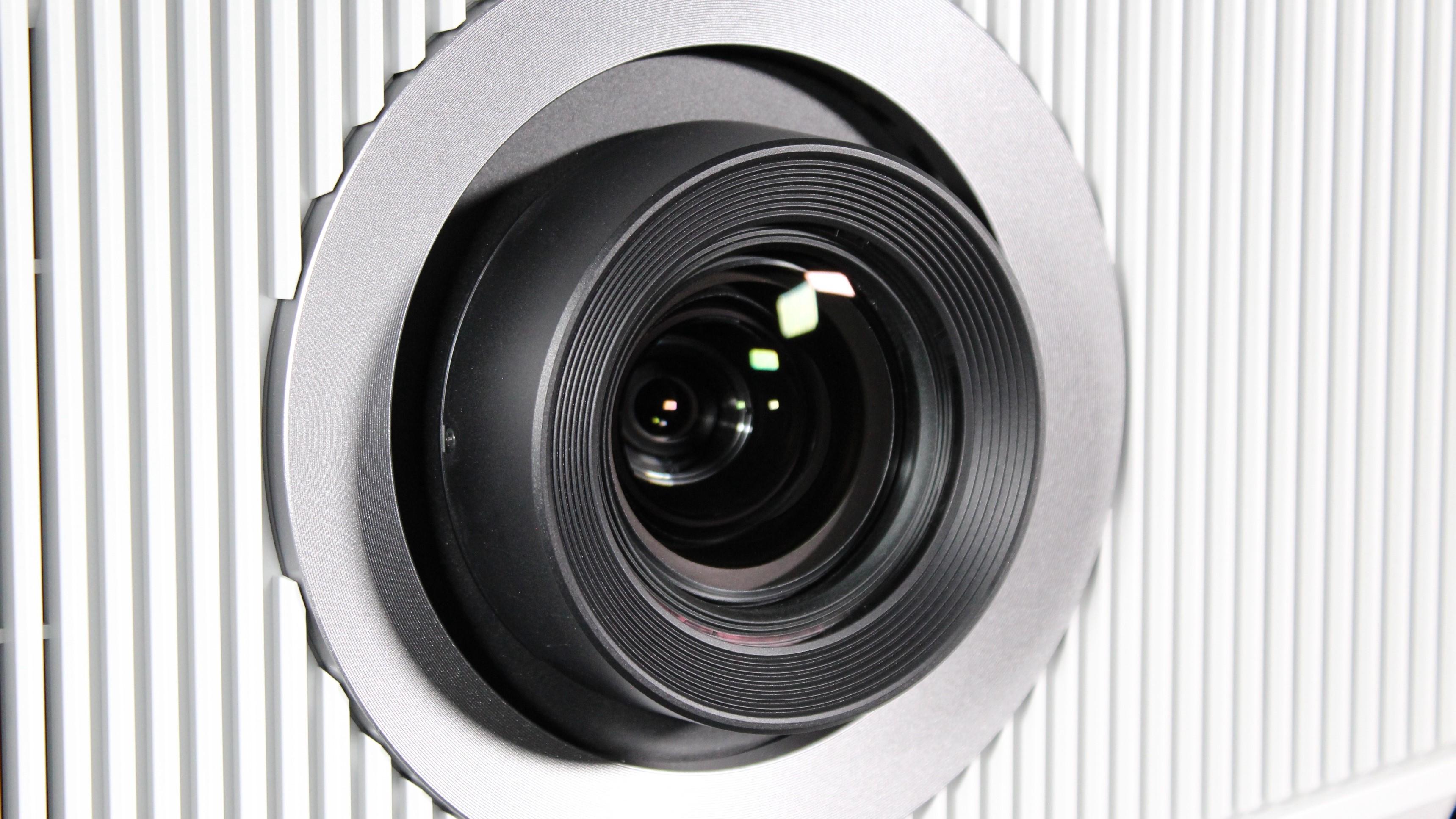
Specifications
Reasons to buy
Reasons to avoid
✅ You want class-leading image processing: The XR Processor brings professional-grade processing to the Projector 8, ensuring superb upscaling, noise reduction, and dynamic HDR tone mapping for awesome big-screen images.
✅ You want 4K 120p support: The HDMI 2.1 inputs allow the Projector 8 to support frame rates of up to 4K 120p, making this beamer a perfect choice for next-gen console owners or anyone using a high-end PC gaming rig.
❌ You want deep inky blacks: Sony’s SXRD LCoS display tech is better at delivering blacks than LCD or DLP, but it still can’t reach the inky depths of JVC’s D-ILA, which is also LCoS but remains the king of contrast.
❌ You want support for HDR10+: The Projector 8 doesn’t support HDR10+, so if you want to benefit from the format’s dynamic metadata, which is very handy for beamers, you’ll need to look at models from Epson or JVC.
Sony’s Bravia Projector 8 is the mid-range model in the company’s projector lineup, and while its $15,999 / £15,999 price will make it unattainable for many folks, there are plenty of things going on under the hood that make it worth your consideration, especially if you’re a competitive gamer.
First, the specs. The Projector 8’s 2,700 lumens picture is plenty bright for a home theater projector, and its pro-grade XR Processor ensures that HD-res pictures upscaled to its native 4K display look clean and precisely detailed. Sony has also stepped up with dynamic tone mapping for its latest projectors, and the benefits when watching movies are clearly apparent – and also helped along by the Projector 8’s Advanced Crisp-Focus lens.
What makes the Projector 8 a superior option for gaming is its 4K 120Hz and ALLM support and its ultra-low 10ms input lag, which is better performance than even some of the best gaming TVs. Combine this with the Bravia 8’s “peerless motion handling” as we stated in our review, and you have one of the best projectors around for competitive gaming.
Is there anything the Sony Projector 8 doesn’t give you for the money? There’s no HDR10+ high dynamic range or 3D support, both of which you’ll find on our main premium 4K projector choice, the JVC DLA-NZ800. But if you have the money and are looking for a great projector for gaming that also excels with movies, the Projector 8 is well worth consideration.
Read the full Sony Bravia Projector 8 review
How to choose the best 4K projector for you
What to look for in a projector
You've made up your mind: a projector is the perfect AV solution for you. So how do you choose one?
If you're going down the home cinema route, you're generally looking at more premium projectors with 4K resolution, HDR support, high contrast and high light output from a laser-based light engine. More portable devices tend to cut a few corners in favor of portability and practicality.
The first thing to consider is how far away the projector is going to be from the screen. For smaller spaces, and particularly for gaming, short throw projectors are great since you can place them fairly close to a screen or a wall and get good results. They're not ideal for home theater setups, however. For that, you'll want a long-throw projector. These are typically installed on a ceiling and sit much further back in the room, and they can project a much bigger image.
The next feature is light output, and how that light is created. Brightness is typically measured in lumens, and the bigger the number the brighter the output. Under 3,000 is fine for darker rooms or night viewing but for a brighter environment, you'll want higher light output.
There are three kinds of light sources. Bulbs, LEDs and lasers. Bulbs are the oldest and cheapest technology, but they can generate a lot of heat and bulbs will need to be replaced fairly often.
LEDs tend to be a little brighter and a lot more accurate, and they don't generate the same amount of heat so they last much longer – typically 20,000 hours of viewing. LED projectors can be made much smaller than lamp-powered ones.
Lasers are better still, with a similar lifespan to LED but much better brightness. However, they generally cost more.
Finally, there's the consideration of whether or not to use a dedicated projection screen. A screen is crucial for getting optimal performance from your projector, whether it's a regular or portable model. When shopping for a screen, however, you'll discover there’s an almost bewildering array of options, so check out our five things to consider when shopping for a projector screen guide to learn more about screen types and how to select the perfect one for your setup.
Do I need a 4K projector?
If you're not convinced by any of the 4K projectors in this list, it may be worth weighing up the pros and cons of competing technologies.
One of the best TVs is generally a simpler affair: you put it in your home, on a wall or stand, and it stays there. It's a set screen size, and will offer the likes of 4K resolution or HDR at a cheaper price point than a projector.
Projectors tend to be pricier for comparative resolutions or HDR support, especially dynamic HDR – with Samsung The Premiere 9 and the JVC DLA-NZ800 being two examples of beamers with HDR10+.
However, the compact form and flexibility that a projector affords does make it a better choice in many cases, and the ultra-large, cinematic image they can provide makes them well worth the investment for die-hard movie fans.
How important is ultra short throw?
Many new 4K projectors these days come with ultra short throw technology, which vastly reduces the distance needed between the projector and the wall or screen surface it's projecting onto.
The laser light module used for this creates crisp images, though it does ramp up the price from a non-laser long-throw model, or even regular 'short throw' which sits somewhere between the two.
Ultra short throw (or 'UST') is certainly a great space-saving measure, keeping your projector in the same position as you might put a TV, and meaning you don't need to install a projector into your ceiling. With UST, people moving around a room are less likely to block images too. These models also pack better built-in audio than other projector types, along with built-in streaming capability for popular apps.
How big should my 4K projector picture be?
An age-old question. It really comes down to how big a picture you can fit in your home. A standard projection screen size is 100 inches, though larger – in some cases, much larger – and also smaller screens are also available. It's well worth measuring the wall you have at home, and checking whether the projector you plan to buy can beam an image at the size you have in mind from the distance where you plan to install it.
Are 4K projectors as good as 4K TVs?
Yes, with some important caveats. The biggest one is that projectors are not usually as bright as TVs, and as a result most really struggle in brightly lit rooms: the more light there is, the less vivid your projected images will be. Projectors are best suited to home theater setups rather than sun-drenched living rooms, though some ultra short throw projectors like the Epson EpiQVision Ultra LS800 included in our list provides an exception to that rule.
The second consideration is cost. 4K projectors aren't coming down in price as quickly as TV panels are, and that means you'll usually pay more for a good quality 4K projector than for a good quality 4K TV.
That said, if you're looking for a big picture then the price differences start to disappear. 4K TVs become very expensive at their largest sizes, and projectors effortlessly deliver bigger images than even the biggest mainstream TVs.
Another thing to consider is refresh rate, and again that's something TVs tend to be better at – so if you're buying for gaming, you'll get a smoother performance from one of the best 120Hz TVs with a fast response time than you'll get from a similarly priced projector. And you're more likely to find HDMI 2.1 ports with gaming-friendly features in a TV than in a projector.
Will a projector play Netflix, Disney Plus and the rest?
The short answer is yes, but the specifics vary from device to device.
Higher-end long throw projectors are generally “dumb” displays, with no built-in smart TV interface or ability to stream video directly. That’s because they’re usually the main video component in an AV system that uses a receiver and separate speakers for audio, with the receiver sending video directly to the projector, and audio to the speakers.
But some of today's projectors, particularly UST models, are as capable and connected as any smart TV, with many models running Anroid TV or another TV OS and offering streaming apps from big-name services such as Prime Video or Disney+ pre-installed. All you need to do is log in with your account details and you can use the app just as you would on a TV.
For projectors where that isn't the case you usually have three options: you can connect a device such as a laptop or Apple TV via the HDMI connector, run the streaming app on that and send its video to the projector; you can put a streaming stick such as an Amazon Fire TV Stick into the HDMI port and use that as your video source; or you can stream wirelessly from a device such as a laptop, Chromebook, phone or tablet. The two main standards for easy streaming are Google's Chromecast, which is in Android devices and the Chrome browser, and Apple's AirPlay 2, which is in iPhones, iPads and Macs.
When you stream, you're usually streaming video and audio simultaneously – which is fine if your projector has speakers that you want to use. If not, your projector or your streaming device may enable you to send audio to wireless Bluetooth speakers or a soundbar at the same time as you watch the video.
Other 4K projectors to consider
Anker Nebula Cosmos 4K SE: A very good, portable 4K projector, the Anker Nebula Cosmos 4K SE delivers very good picture quality and surprisingly strong built-in sound at a good value price. It's pricier than most portable projectors but delivers more features and better picture, too. It doesn't quite however beat the LG CineBeam Q, our choice for best affordable and portable 4K projector. Read our full Anker Nebula Cosmos 4K SE review.
Xgimi Aura 2: The Xgimi Aura 2 is a great ultra short throw 4K projector that delivers excellent picture quality, led by its vibrant colors and strong details as well as impactful built-in sound. While it delivers for the most part, the Hisense PX3-Pro delivers an overall better experience and it's why its our choice for the best ultra-short throw 4K projector, but the Xgimi Aura 2 is a strong alternative. Read our Xgimi Aura 2 review.
JMGO N1S Pro 4K: Another portable projector option, the JMGO N1S Pro 4K offers flexibility thanks to its number of angle options, as well as punchy built-in sound and good overall picture quality. It doesn't top the LG CineBeam Q, but the JMGO N1S Pro 4K is still a good portable model. Read our full JMGO N1S Pro 4K review.
BenQ W5800 review: A premium 4K projector that provides superb picture quality and a range of installation options, the BenQ W5800 doesn't feature on our list due to its very high price tag and lack of modern features such as built-in speakers and streaming app support. If you're looking for a no-nonsense, home theater projector with excellent picture and have the budget though, the BenQ W5800 is still worth considering. Read our full BenQ W5800 review.
How we tested the best 4K projectors
We test the best 4K projectors in real-world conditions, viewing with both room lighting on and lights off to get a sense of how well the projector performs under a range of conditions. All of our viewing is done using a projection screen, either a matt white material or an ambient light-rejecting screen in the case of ultra short throw projectors.
Sources used for our testing include 4K Blu-ray and streaming services, and Xbox One X and PlayStation 5 gaming consoles. We also use test patterns from the Spears & Munsil Ultra HD Benchmark disc and standalone pattern generators to measure performance factors such as peak brightness.
The latest updates to this guide to the best 4K projectors
28 February 2025
Added Sony Bravia Projector as 'Best premium for gaming' option
31 January 2025
Replaced Epson LS800 with Epson QB1000 as 'best for sports' option.
2 January 2025
Re-wrote the Also Consider section with 4K projectors that we've reviewed and liked but don't quite make the list of best 4K projectors.
Read more updates
4 December 2024
Added Formovie Cinema Edge as 'best budget ultra short throw' option.
5 November 2024
Updated Other 4K projectors to consider section with key forthcoming TechRadar projector reviews.
10 October 2024
Replaced Hisense L9G with Hisense PX3-Pro as 'best ultra short throw' option.
12 September 2024
Replaced Samsung The Premiere with new The Premiere 9 UST model as 'best for sound' option due to its improved brightness and enhanced sound features.
15 August 2024
Added more buying advice, detailing pros and cons for each projector in the list.
19 June 2024
Replaced JVC DLA-NZ8 with newer model JVC DLA-NZ800 as "Best premium" 4K projector.
21 June 2024
Added image galleries for each projector model.
23 May 2024
Added BenQ X300G as "Best gaming" 4K projector.
29 April 2024
Added LG CineBeam Q as "Affordable and Portable" option; changed Ben Q TK700STi to "Best Gaming" option.
25 March 2024
Added "Also consider" section with descriptions of other recently reviewed 4K projector options.
27 February 2024
Replaced Samsung The Freestyle (2022) with updated model, The Freestyle 2nd Gen.
4 January 2024
Added link to TechRadar CES hub in introduction.
4 December 2023
Checked to confirm the availability of all models in guide.
26 October 2023
Restructured this guide to make it easier to navigate, and to give more specific recommendations to different models. We also added this new 'Latest updates' section to help readers know how we've changed the guide recently.
Get daily insight, inspiration and deals in your inbox
Sign up for breaking news, reviews, opinion, top tech deals, and more.

Al Griffin has been writing about and reviewing A/V tech since the days LaserDiscs roamed the earth, and was previously the editor of Sound & Vision magazine.
When not reviewing the latest and greatest gear or watching movies at home, he can usually be found out and about on a bike.